
- Conservation

A Private Visit to Sheldrick Wildlife Trust
Sheldrick Wildlife Trust was founded by Dr. Dame Daphne Sheldrick DBE in memory of her late husband David Leslie William Sheldrick WBE. Much like the late David Sheldrick, Sheldrick Wildlife Trust (SWT) has been a pioneer in conservation for nature and wildlife in East Africa.
Located in Nairobi, with a field headquarters bordering the Tsavo East National Park, SWT is a renowned organization for their work in protecting some of Africa’s most vulnerable species. Charitable expansion into the UK and USA has allowed SWT an even greater reach for education, financial support, and engagement across multiple continents.
In 1948, David Sheldrick began his renowned career within the Royal National Parks of Kenya, where he worked unwaveringly for over two decades transforming Tsavo, a previously unchartered and inhospitable land, into Kenya’s largest and most famous National Park. David Sheldrick stands out, even today, as one of Africa’s most famous and proficient pioneer National Park Wardens. Sheldrick Wildlife Trust
Generations of experience, passion, and dedication have paved the way for SWT to become what it is today. For over 45 years, SWT has been able to provide 8,853 veterinary cases to animals in need. This ranges from snared elephants to zebras shot with poisoned arrows by poachers. They have also developed 22 mobile de-snaring units across Kenya to combat the poaching pandemic. However, what Sheldrick Wildlife Trust is most known for is their work with orphaned elephants known as the Orphans’ Project.
Orphans’ Project
A popular spot for tourist on their stay or stopover in Nairobi is the Sheldrick Wildlife Trust elephant nursery. The “Nairobi Nursery” has successfully raised 282 elephant orphans to date, as well as 17 hand-raised rhinos. The efforts provided by SWT under this project cannot be understated. Elephant calves often become orphans when their mothers die at the hands of poachers, from drought, human conflict, of disease. While some calves can assimilate back into herds, that relief is only temporary. While the herd will provide the protection that the calf needs, the other adult females will not allow orphaned babies to nurse as it would pull nutrition away from their offspring.
This is where SWT has been successful in rescuing orphaned calves. The organization rehabilitates the calves through adolescence before reintroducing them back into the wild. However, the process can be painstakingly long, agonizing, and trying at times. In many cases, orphaned elephants require hands on medical care. Unfortunately, many arrive to the organization with life threatening injuries or, in some cases, are on the brink of death.
The nursery program in Nairobi provides a second chance at life with the ultimate goal of reintroducing to a wild herd. However, this is no small task as it could take approximately 10 years of care for successful reintroduction. While this may seem like a long time to have an orphaned animal under care and supervision, it is done to ensure that the reintegration has the highest probability of success. The results of the successful raising of 282 orphans has led to 50 babies being born to wild living orphaned elephants.
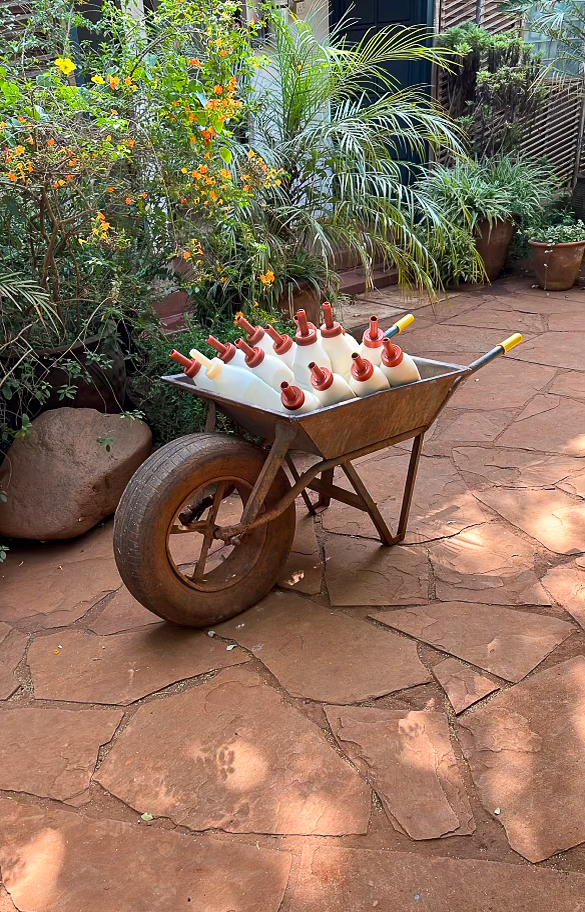
How to Get Involved with Sheldrick Wildlife Trust
The best ways to get involved with Sheldrick Wildlife Trust is to spread the word – tell others about the work this organization does and the success that they have accomplished. The other way is to donate by adopting an elephant for as little as $50 USD per year. Your annual donation to one of Kenya’s oldest and most reputable wildlife conservation organizations will ensure that they can continue their work for decades to come.
You can also donate directly to the organization , shop in their online store , or find another way to get involved with some of their partners.
For those who travel to Nairobi and are interested in visiting, you can find all of the scheduling information on their website .
Our Personal Experience with SWT
Our work in conservation started as a charitable donation to Sheldrick Wildlife Trust.
After coming across the organization back in 2020, we decided to make it a priority to visit Kenya as soon as we could. Unfortunately, the covid-19 pandemic disrupted those plans until early 2022. However, due to the ongoing pandemic, private tours were scarce. We had to pull a few strings in order to get a privatized visit before the gates opened to the public.
What to Expect on a Private Tour
We were able to arrange a private visit at 9:00 AM. Upon arrival, we were met by a member of the SWT team who escorted us to the area where the orphans would congregate for their morning feeding. Along the way, we were educated with an in-depth lesson as to the variety of projects SWT is currently undertaking. It was fascinating to learn about the processes involved in raising an orphan and caring for them until they are ready for reintegration into the wild. It can take up to ten years for an orphan to be reintroduced to the wild. They will typically remain in the SWT Nairobi Nursery until they are 4-5 years old. After that, the orphan is moved to Tsavo East National Park. It is at this location where the second phase of their journey towards a wild life begins.
After this brief introduction, we spent a few minutes patiently waiting for the orphans. We were in awe as the babies started emerging from the forest towards their keepers who had bottles in hand. As the babies fed, our guide pointed out each individual baby and shared their story with us. From drought to lion attacks to human conflict, each had their own personal background for how they ended up in SWTs care.
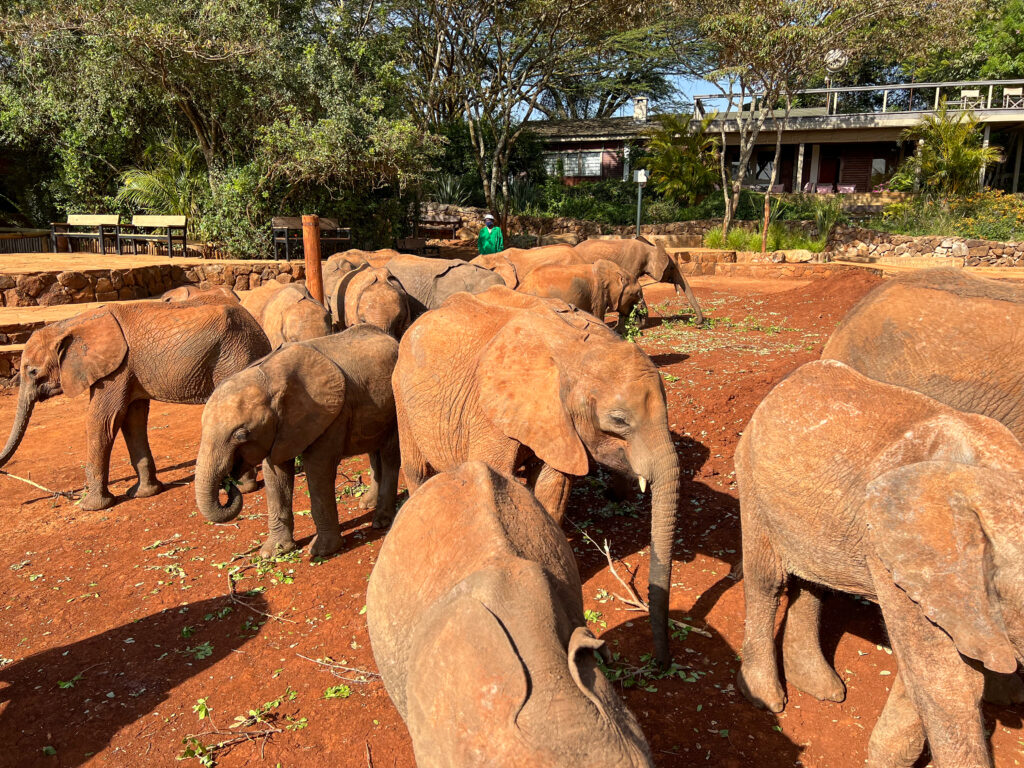
Hands-on Experience with Baby Elephants
After the babies finished eating, we were able to move down and walk among them. Even for babies, they were quite large and powerful. Their skin was dry and tough, but their demeanor was cautiously inquisitive. We observed in admiration as these babies played and interacted around us. Often times they would come over to check us out, allowing us the opportunity to say hello to one another. During these encounters we were safely able to touch the elephants on their backs which was a humbling experience.
We began our relationship with SWT by adopting a young elephant named Kinyei . She was found by a group on a safari game drive when she was wandering dangerously close to lions in the Ol Kinyei Conservancy in 2018. An adult female, presumably her mother due to evidence of lactation, was found deceased nearby. It is believed she died of disease, leaving Kinyei as an orphaned calf. SWT was notified and took prompt action to ensure Kinyei’s safety. Thankfully, SWT was able to get her into their care to give her a second chance at life.
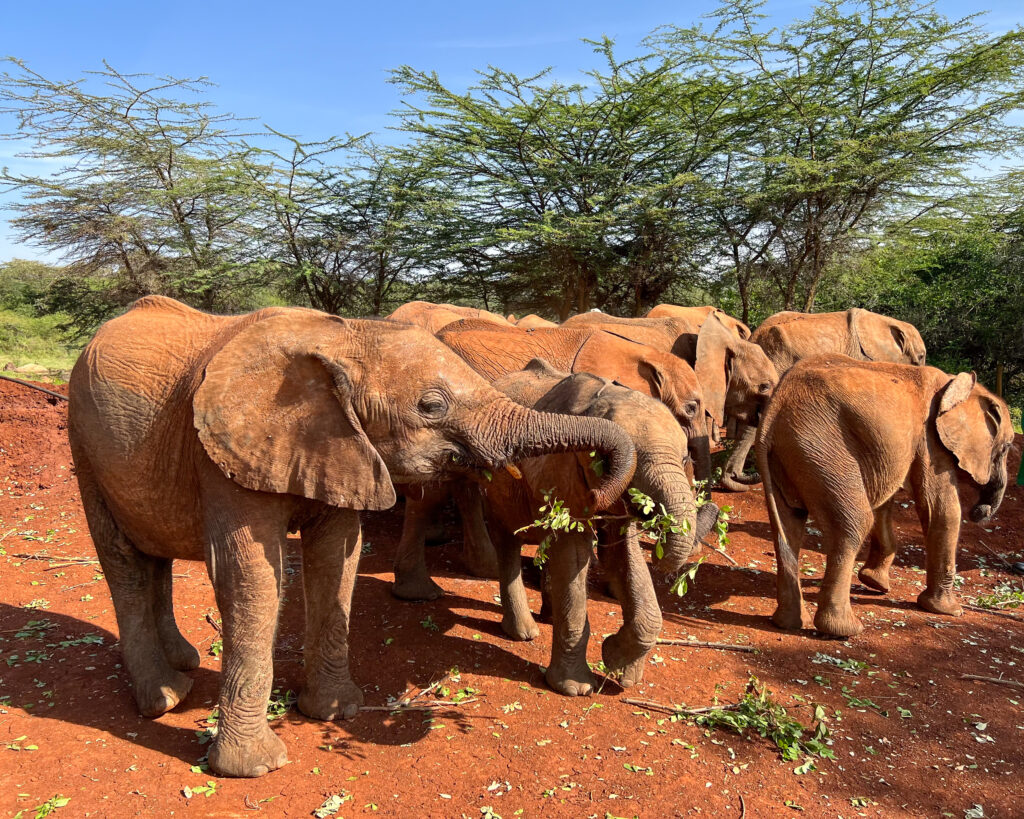
During our visit to the Nairobi Nursery, we had the pleasure of getting a very up close and personal experience with this cheeky little elephant. As luck would have it, Kinyei was very interested in us. She made her way to where we had been standing and climbed the stone step onto the viewing platform. She curiously sniffed us as she meandered closer to a thicket of trees that she wanted to graze on nearby. It was an absolute pleasure to have the opportunity to spend so much time with an elephant we had been following closely for the last two years. Her spunky personality was everything we had read about online and we were so happy to see her thriving.
As our visit with the elephants began to wind down, we were escorted to a different area of the property where we got to see the holding pens for the orphans. Each orphan gets their own pen in which they sleep at night.
There is even a bunk for their keeper to spend the night with the orphan in case the baby is too frightened to be along all night. This level of compassion is what makes SWT so special.
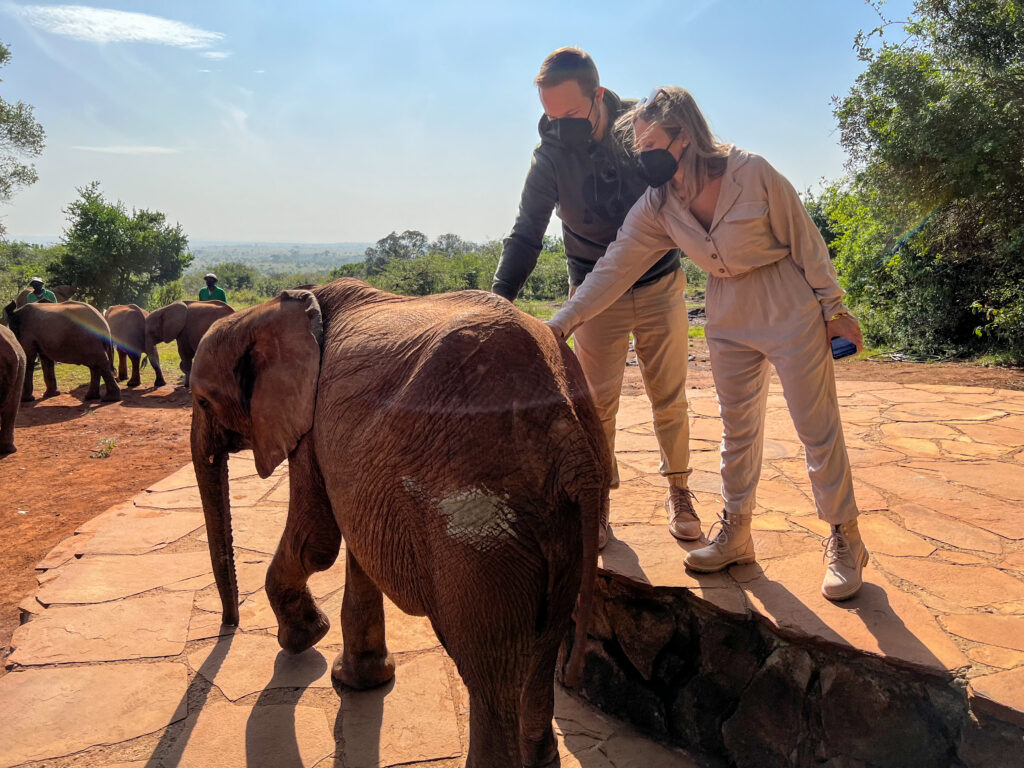
Before concluding our visit, we observed a 15 year old blind rhino named Maxwell. He has been under the care of SWT since he was rescued as a yearling baby back in 2007. It is unclear what happened to his mother, but the SWT team found him near their HQ when he was wandering around aimlessly. After waiting for the mother to return, it was clear that she would not be coming back. Sadly, it was also apparent that Maxwell was blind. Without intervention he would not have been able to survive the threat of predators in the wild. He will never be able to go back into the wild due to his blindness, but he does have a life full of attention and care with SWT.
Overall Impression of Sheldrick Wildlife Trust
By the end of our visit, we were even more enthralled with the work that Sheldrick Wildlife Trust performs. It was a great feeling to know that the organization was everything we expected and so much more. It is hard to not want to be involved after seeing firsthand just how much work, dedication, and passion goes into providing care to all of these magnificent animals. The organization is dedicated to protecting East African wildlife. Through their efforts, they have demonstrated that elephant conservation is at the core of what they do. Their impact on elephant populations will be felt for years to come, but they need ongoing support.
Each of us can provide the attention and resources needed to increase elephant numbers in the future. Tell a friend, share this post, and get involved! Please visit the SWT website to learn more about the amazing work this organization is doing to conserve, protect, and rejuvenate elephant populations. Conservation programs are vital to sustaining African wildlife populations and it is never too late to become part of the solution!
You may also like
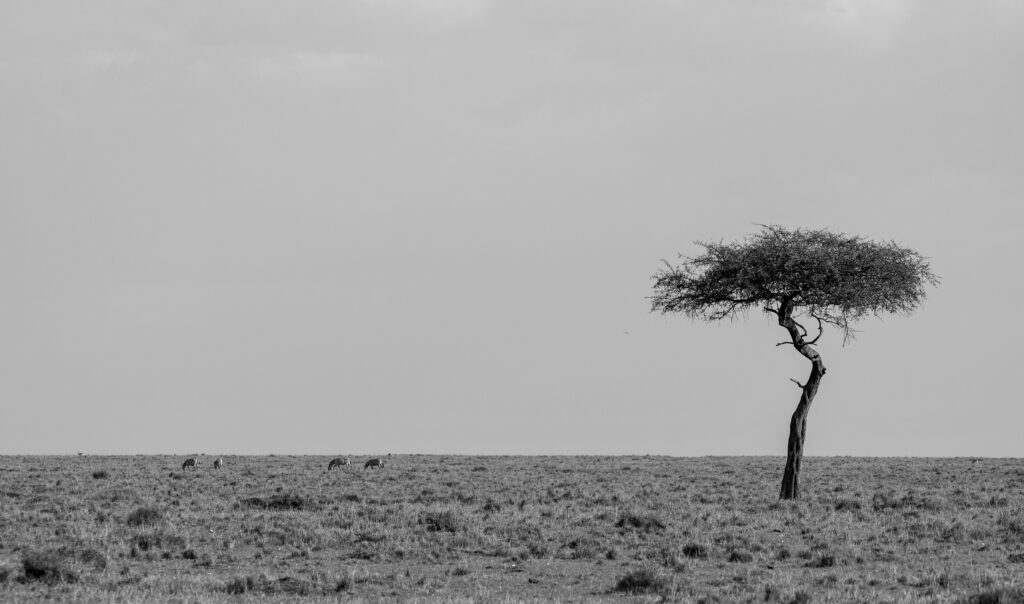
How to Photograph Your First Safari
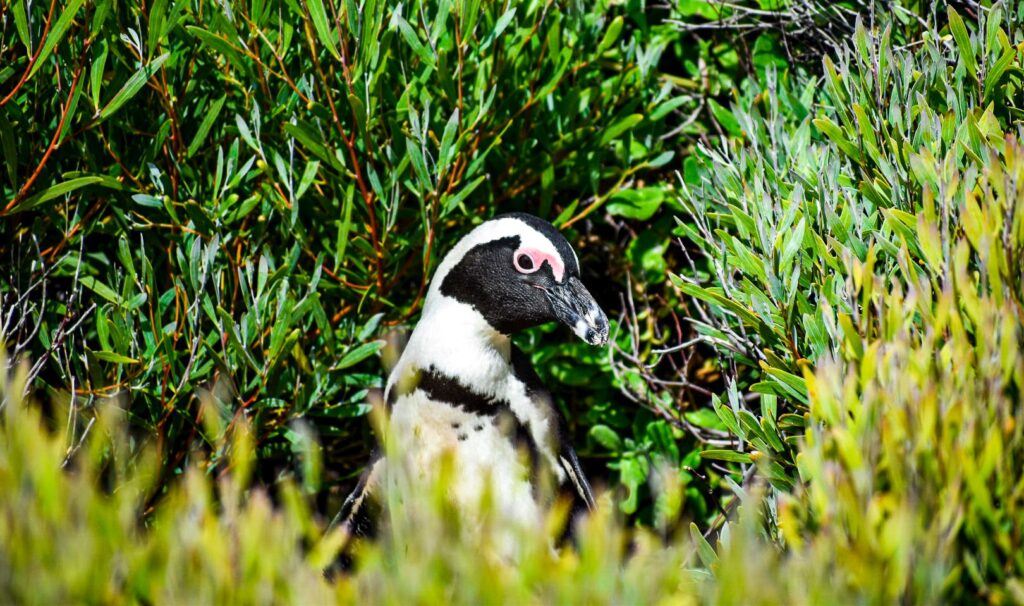
Visiting Boulders Beach: What You Need to Know
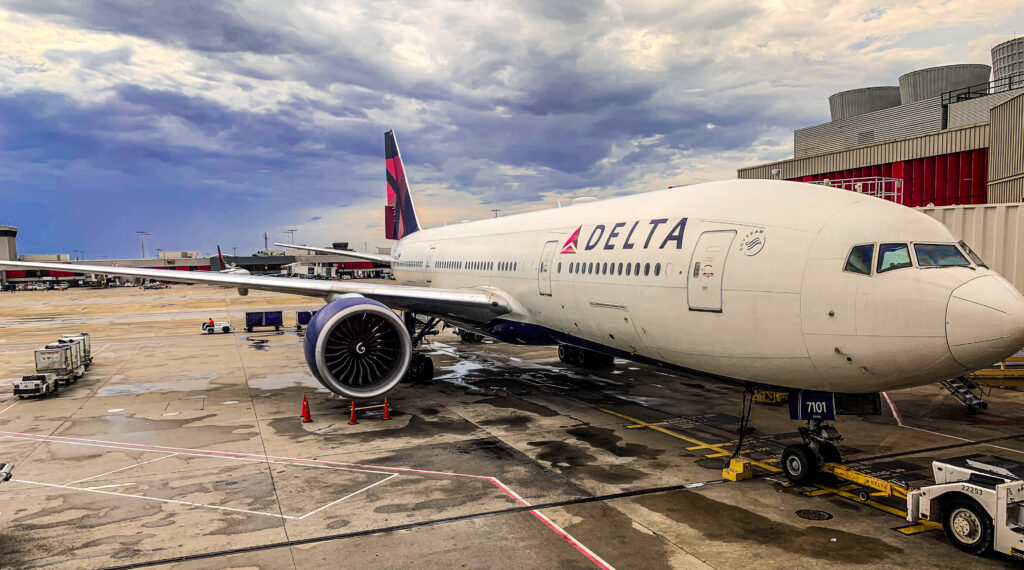
The Secrets to Surviving a Long Flight
Leave a comment cancel reply.
Your email address will not be published. Required fields are marked *
Save my name, email, and website in this browser for the next time I comment.
This site uses Akismet to reduce spam. Learn how your comment data is processed .

The Time is Now: World Lion Day 2022
Privacy overview.
your adventure of a lifeTIME starts here!
Your adventure of a lifetime starts here, experience small group elephant safari tours in kenya that are uniquely designed for travellers with a particular interest in the sheldrick wildlife trust.
the experience
"kutimiza ndoto" fullfilling a dream.
Orphan Trail Safaris offer specialised, fully escorted small group elephant safaris in Kenya, focussing on Wildlife Conservation and Elephant Rehabilitation. All our tours offer an ethical experience, allowing solos, couples and friends worldwide to combine interests, bringing like-minded people together.
Follow the orphaned elephants trail from the SWT’s Nairobi Orphanage to their Reintegration Units in Tsavo and their progression on into the wild. These extraordinary safaris include a special Private Visit to the Sheldrick Wildlife Trust’s Orphanage in Nairobi plus staying at the SWT’s exclusive, private Eco Camps in Tsavo offering a truly magical and very personal experience, with orphaned elephants, ex-orphans and wild elephant herds.
All our tours provide an all-inclusive package along with professional ground operations, ensuring an unforgettable journey into the wilderness.
An experience like no other.
BEGINNINGS - THE NURSERY
Sheldrick wildlife trust, make unforgettable memories with us on a unique elephant safari..
Orphan Trail Safaris offer a personal touch; every small group elephant safari is meticulously organised and, in most cases, personally escorted & guided by Beverly Perry, a passionate Wildlife Conservationist with years of experience in this field.
We’ll take you to all the Sheldrick Wildlife Trust’s reintegration units and stay at their private Eco Camps & Lodges which are available only in their entirety on a self-help basis, offering exclusive access to the Sheldrick Wildlife Trust’s orphaned elephants.
Let us take the headache out of planning all the difficult logistics, supplying all tour provisions and creating delicious meal plans whilst every guests individual requirements and personal abilities are taken into consideration.
Every Orphan Trail Safari includes a Private Visit to the Sheldrick Wildlife Trust Elephant Orphanage in Nairobi, staying at their remote private Eco Camps & Lodges in Tsavo, finishing the adventure with a traditional Wildlife Safari in one of Kenya’s prestigious National Parks. All accommodation fees for the SWT Eco Camps go directly to the Trust & KWS Conservation Initiatives; protecting & conserving this pristine, remote wilderness in northern Tsavo where general tourists are not permitted.
On these unique Elephant Safaris, we seek the animals rather than expecting them to see them trackside; the area is suited to those who savour the unspoilt aspect of a truly wild place, under huge skies and a million stars.
We guarantee an action-packed itinerary, while delivering a truly unique and ethical African Elephant Safari experience!
LATEST ELEPHANT SAFARI TOURS
Let us make your dreams come true, orphan trail safari.
+ ALL 4 SWT REINTEGRATION UNITS
13th Feb 2025
27th feb 2025, 15 days all inclusive.
+ 3 SWT REINTEGRATION UNITS
24th june 2025
6th july 2025, 13 days all inclusive, 9th sept 2025, 23rd sept 2025, 15-days all inclusive, 1st feb 2026, 12th feb 2026, 12 days all inclusive, read what our past guests are saying about our elephant safari tours.
“Africa changes you forever, like nowhere on earth. Once you have been there, you will never be the same. But how do you begin to describe its magic to someone who has never felt it. How can you explain the fascination of this vast, dusty continent, whose oldest roads are elephant paths. Could it be because Africa is the place of all our beginnings, the cradle of mankind, where our species first stood upright on the savannahs of long ago?” -Brian Jackman-
Sheldrick Elephant Orphanage, Nairobi: The Complete Guide
:max_bytes(150000):strip_icc():format(webp)/anoukmarrakech-56a373305f9b58b7d0d20299.jpg)
lrosebrugh/ Getty Images
Elephant Nursery
If you're planning a trip to Kenya , there are many reasons to extend your layover in Nairobi . At the top of the list is the David Sheldrick Wildlife Trust's Orphans' Project , which rescues, rehabilitates, and ultimately releases baby elephants, rhinos, and giraffes back into the wild. The sanctuary is part of Nairobi National Park and was founded by world-famous conservationist and author of Love, Life and Elephants , Dame Daphne Sheldrick. Discover why the project is worth supporting and why it'll be a memorable addition to your Kenyan vacation.
About the Orphans' Project
Originally, the Orphans' Project was set up exclusively for baby elephants who had lost their mothers due to poaching, drought, habitat destruction, or human-wildlife conflict. Because infant elephants rely exclusively on their mother's milk for the first two years of their life, it is unlikely that orphaned babies will survive without human intervention.
As the founder of the David Sheldrick Wildlife Trust and the wife of legendary conservationist David Sheldrick, Dame Daphne has worked with elephants for more than 50 years. Through trial and error, she was able to create a formula that worked as a substitute for elephant milk, giving orphaned babies a chance for survival. Daphne and David successfully hand-reared many baby elephants during his time as warden of Tsavo East National Park .
After David passed away in 1977, Daphne set up the David Sheldrick Wildlife Trust in his memory and opened a formal orphanage (rather than caring for the babies in their private home). Today the trust welcomes rescued rhinos and giraffes as well, and has successfully raised over 240 orphans through a remarkable program of hand-feeding and round-the-clock care. Once the babies are old enough, they are transitioned back into the wild at Tsavo East National Park.
Visiting the Orphanage
The orphanage is open to the public for one hour a day, between 11 a.m. and midday. During this time, you'll have the opportunity to watch the babies being hand-fed by their carers, and enjoying a mud bath or soil dusting. The visit is both entertaining and educational, with one of the keepers giving a fascinating lecture about the project's history and goals, the issues that face elephants in the wild and the practicalities of raising very young wild animals by hand. You'll also be introduced to each of the babies, learning a little bit about their story and personality.
You can take plenty of photos, and afterwards there's a small gift shop that sells souvenirs of your trip.
Directions & Entry Fees
The orphanage is located inside Nairobi National Park, which is approximately 15 kilometers from Nairobi city center. You'll need to enter through the KWS Central Workshop Gate, situated on Magadi Road in Langata. Catch a taxi from your hotel, or ask your tour operator to include the orphanage as part of your Kenya itinerary. It's actually worth staying in the area as there are plenty of other tourist attractions nearby, including the Karen Blixen Museum and the Giraffe Center (where you can learn more about the endangered Rothschild's giraffe). To stay overnight in the park itself, book accommodation at Nairobi Tented Camp .
Entry requires a minimum donation of $7 or 500 Kenyan shillings per person. The orphanage only accepts cash.
Adopting an Orphan
It's hard not to be touched when you see the dedication and hard work it takes for the keepers to keep the young elephants happy and healthy. Feedings occur every three hours around the clock, and keeping them warm and emotionally secure requires a huge amount of effort and money. For just $50 a year, you can adopt an orphan and make a meaningful contribution to the orphanage.
You will receive an adoption certificate, monthly email updates, a monthly water color painting by Angela Sheldrick and exclusive access to the latest Keeper's Diaries, photos and videos. Active adopters are also able to make arrangements for a private visit to the sanctuary, at 5 p.m. when the babies return to their stables for their evening milk and bedtime. All of the orphans that are up for adoption have a profile on the DSWT website , listing their name, age and reason for being at the sanctuary.
This article was updated and partly re-written by Jessica Macdonald on September 5 2019.
Eight of the Top Attractions in Nairobi, Kenya
Your Trip to Nairobi: The Complete Guide
48 Hours in Nairobi: The Ultimate Itinerary
The 8 Best Day Trips from Nairobi
The Top 19 Things to Do in Nairobi, Kenya
12 Best Things to Do in Kenya
Nairobi National Park: The Complete Guide
Kenya Travel Guide: Essential Facts and Information
The Karen Blixen Museum, Nairobi: The Complete Guide
The Best Time to Visit Nairobi
Nairobi's Giraffe Centre: The Complete Guide
Amboseli National Park: The Complete Guide
Serengeti National Park, Tanzania: The Complete Guide
15 Animals to See on an African Safari
Top 10 Wildlife Parks and Reserves in Kenya
Maine Wildlife Park

Elephant Orphans: Visiting Sheldrick Wildlife Trust
Simply put, I cannot remember a time when I didn’t dream of visiting the elephant orphanage in Nairobi. Yes, I am aware of how crazy that sounds, but as a kid, I repeatedly watched documentary specials that transported me to this Kenyan wildlife operation. I was transfixed by their ability to rescue these orphans and get them back into nature. The babies each had their own heartbreaking stories, but once they arrived at the orphanage their fate had the opportunity to shift for the better. The skilled caretakers stayed with the little ones 24 hours a day, even bunking with them to ensure their comfort. Sheldrick Wildlife Trust seemed like a magical place where the impossible could be nurtured by massive, oversized bottles of milk and anything became possible.
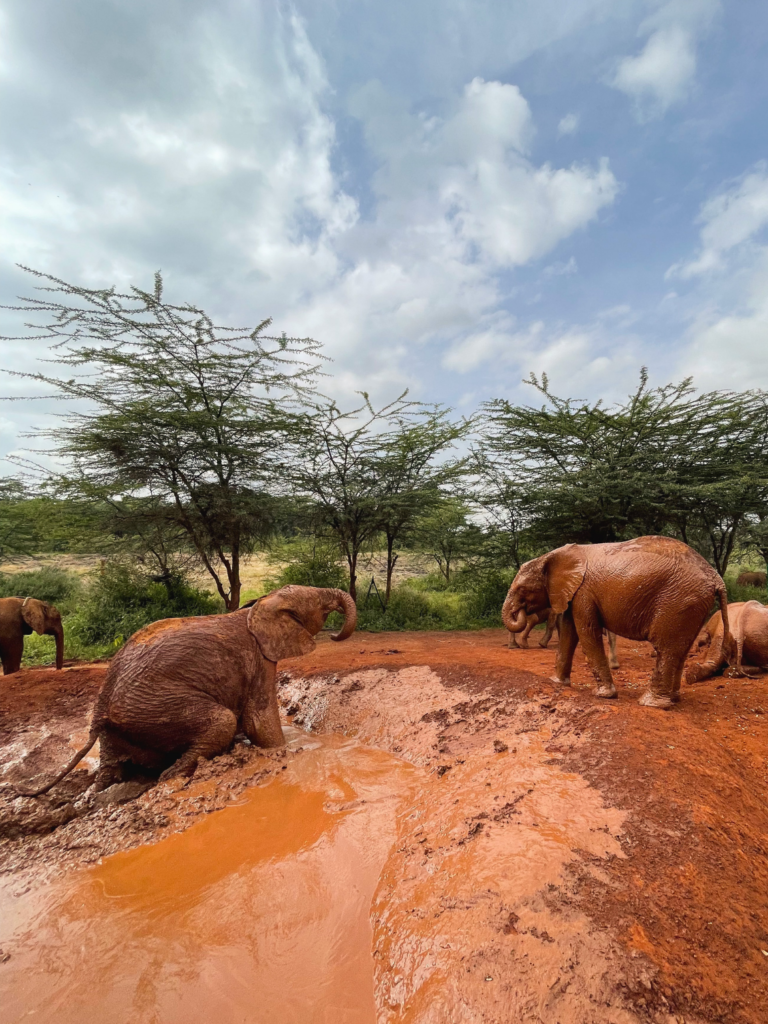
Is Sheldrick Wildlife Trust an Ethical Organization to Support?
Fast forward to 2021, my dreaming finally paid off as I stepped foot into this magical organization and experienced their life-saving work firsthand. But as with any of my wildlife travels, I wanted to ensure that my childhood rose-tinted glasses weren’t misleading me to an experience that was anything but ethical for wildlife. I needed to ensure that Sheldrick Wildlife Trust was a fully conservation-driven organization, with only the highest ethical practices. So, as always, I dove into the research, read countless articles and reviews, and exhaustively vetted Sheldrick as an organization. I couldn’t find one trace of unethical practices for wildlife. Since 1977, Sheldrick truly had been leading a conservation movement in Kenya and around the world. Over the course of four decades, they have successfully raised over 260 orphaned elephants and rhinos. Their work spans beyond rehabilitation, Sheldrick even works to provide veterinary assistance to wild animals in need and leads anti-poaching units that have removed over 160,000 wildlife snare traps. Sheldrick Wildlife Trust clearly exceeded all expectations for impacting wildlife in Kenya.
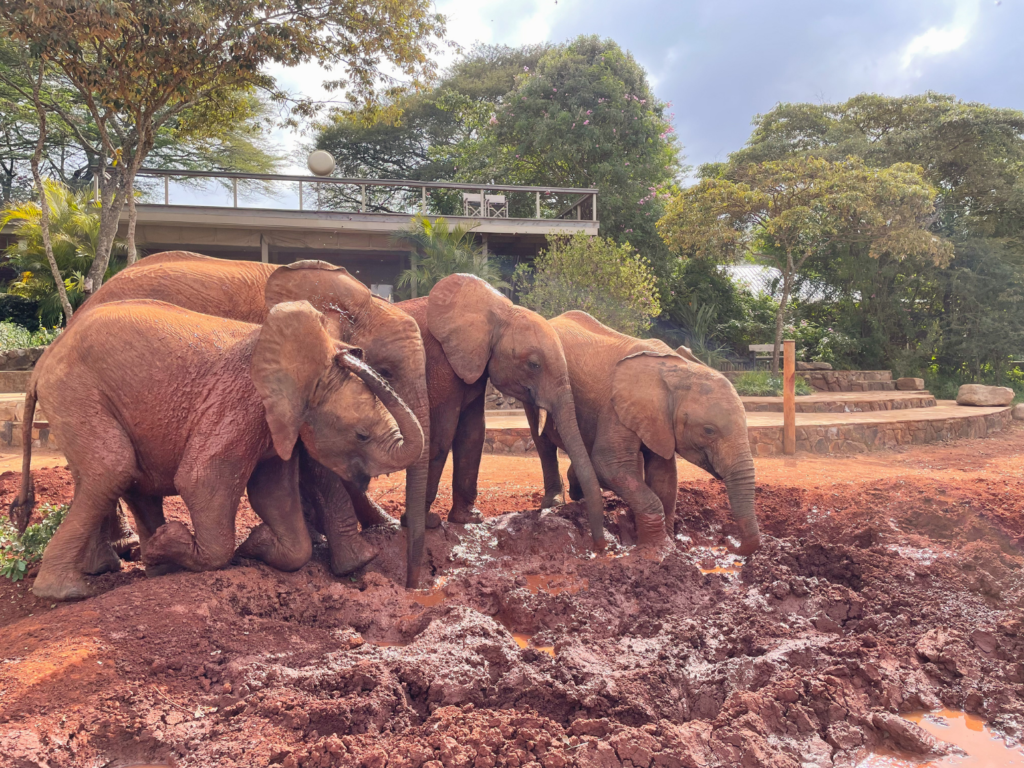
To show my support, even before beginning our honeymoon, I made sure that Lance and I became foster parents to some of Sheldrick’s beloved orphans. I quickly became engrossed in the daily lives of five little elephants: Enkesha, Luggard, Larro, Bondeni, and Roho. Sheldrick has perfected the art of sharing compelling content through storytelling. Their foster emails and posts made it impossible for me not to crave every detail of how Enkeska was adapting with her healing trunk, or how Larro was growing as a mini matriarch. Just when I thought I knew Sheldrick Wildlife Trust forward and back, I was granted an even clearer view into their ethical work for wildlife. But nothing could quite prepare me for stepping foot into their world and seeing it all firsthand.
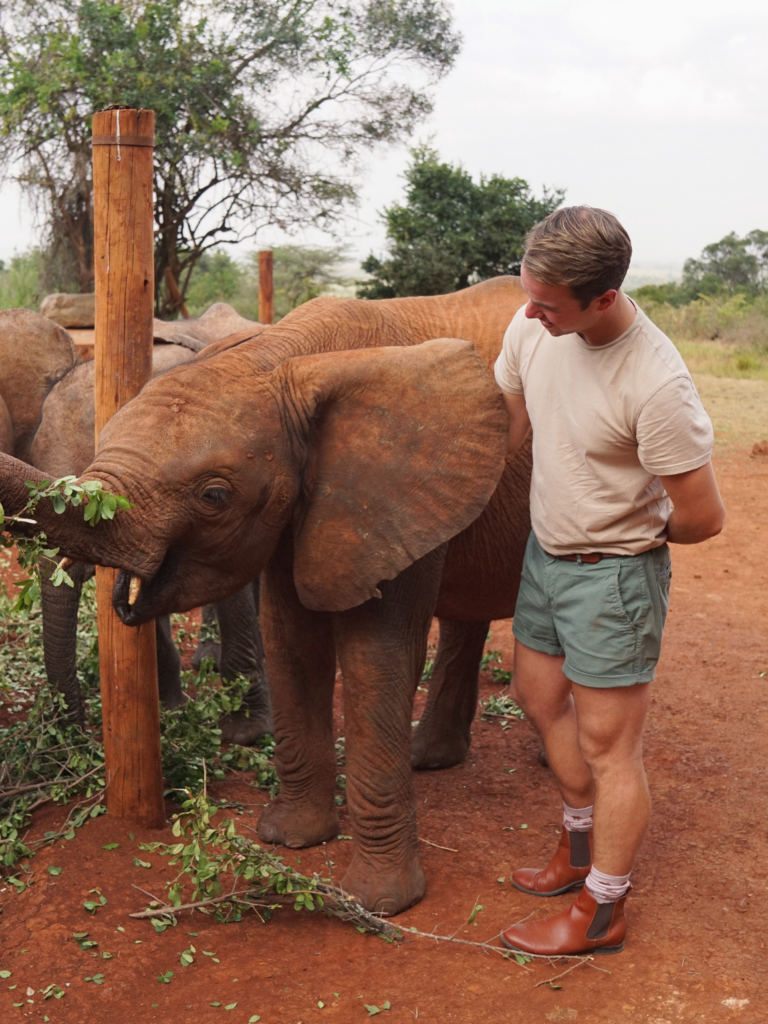
How to Visit Sheldrick Wildlife Trust: Elephant Orphanage
Most folks are only aware of the public midday visit ways to visit the elephant nursery in Nairobi. But there is a second option as well, one that Lance and I thoroughly enjoyed on our honeymoon! Each of these options to visit the elephant nursery are tightly managed and are limited to just one hour each, to ensure that the elephants still enjoy a largely undisturbed daily routine. Let’s break down the two options as they vary in price, group size, and experience.
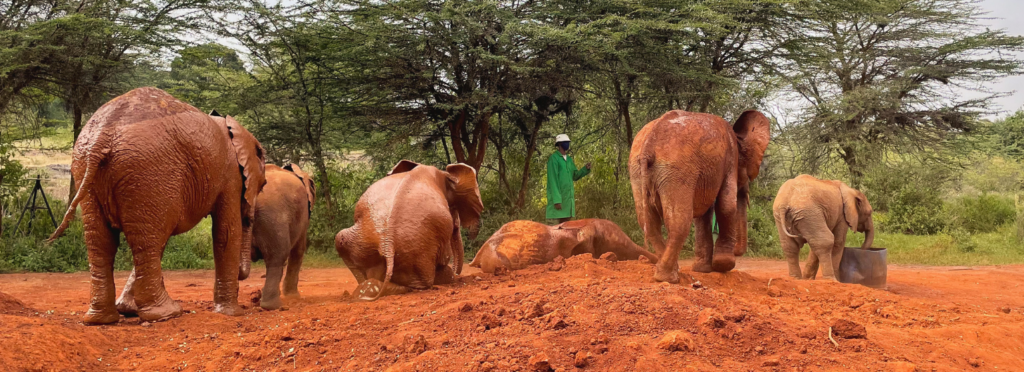
Public Visit: Midday – 11am-12pm For 1 hour each day, the orphanage in Nairobi is opened to the public. Historically this visit was known for massive crowds roped off away from the elephants enjoying their lunchtime bottle break and mud baths. Following Sheldrick’s extended closure during the height of the global pandemic (March 2020-July 2021), this visit has now returned with new booking requirements. Guests are required to purchase their tickets in advance, with no walk-ups. Additionally, the entrance fee has increased to $15 USD for each visit. This advanced ticketing system now ensures that each midday visitation is limited to 100 guests from 11 am-12 pm.
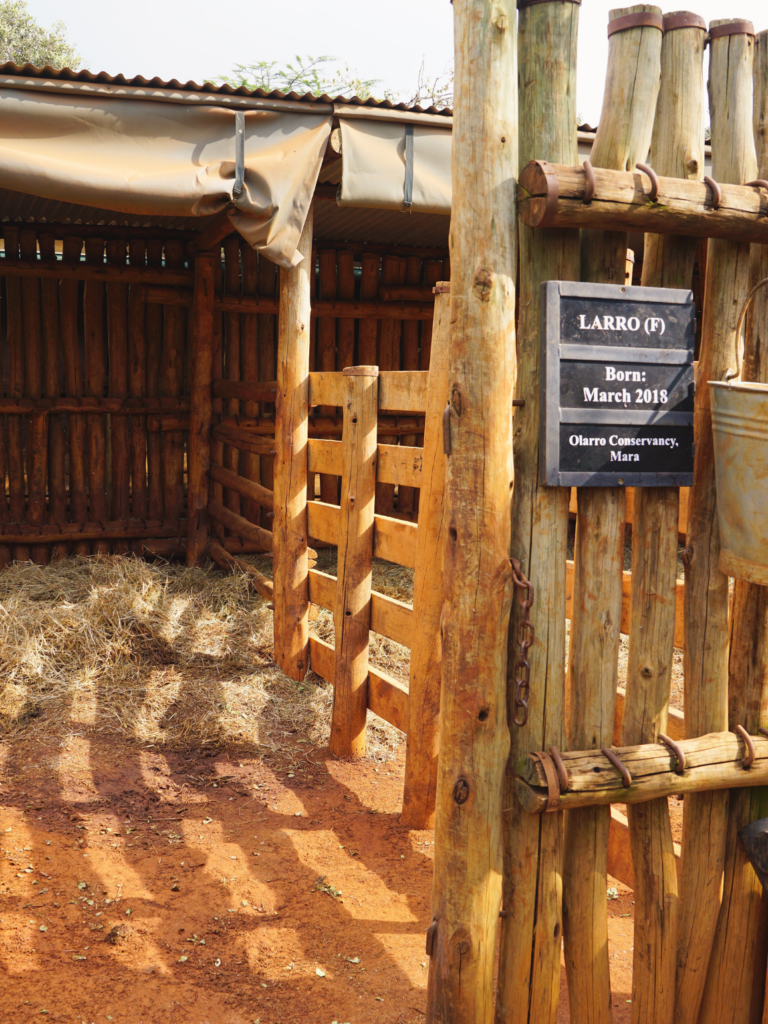
Private Visit: Afternoon – 3pm-4pm Of the two opportunities to visit the elephant orphanage, this is the most exclusive and expensive. For Lance and I, it was the only option available during the time of our visit, in June 2021. At that time Sheldrick was still limiting the number of guests on-site. More so than the other options, these private visits must be booked far in advance. In fact, we set our date at least a year before visiting, and even then, nearly missed our window. This visit is limited to a small group, consisting of no more than 8 guests, and requires a $900 USD donation to Sheldrick Wildlife Trust. Unlike the other visits, we were able to enjoy quality time with just us and the elephants. At 3 pm each day the orphans return to the same location where they receive their midday bottles, for an afternoon refill. After they slurp down their entire bottle, their attention quickly turns to the mud wallow. During the heat of the afternoon, this is a perfect time to have an unrestricted view of the babies as they cool off and cake themselves in a fresh coat of mud. After enjoying the community mud bath for about 30 minutes, guests are then provided a tour of the property to see where the elephants sleep each night. This includes meeting Max the adult black rhino. He was rescued when he was just three months old from Nairobi National Park. The caretakers at Sheldrick quickly realized that he was completely blind, and even following multiple eye surgeries he was unable to regain his vision. Considering his condition Sheldrick has committed to providing him care for the rest of his life. Our private visit to see Sheldrick’s incredible work firsthand was unforgettable, and almost seemed to be over in the blink of an eye.
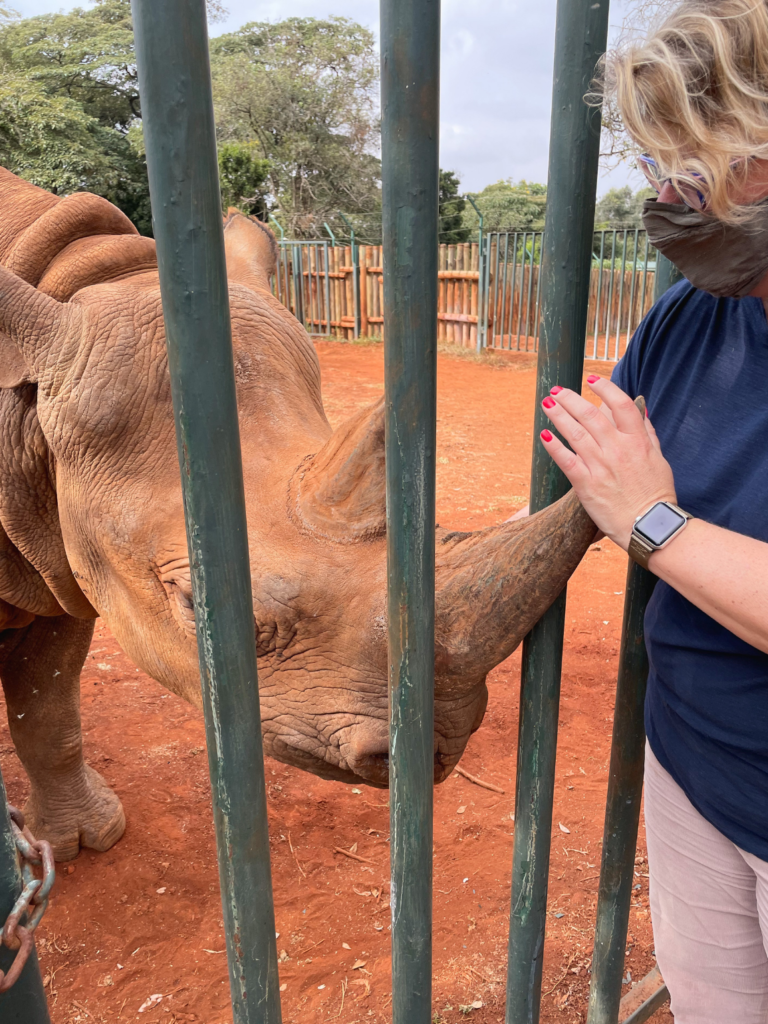
Sheldrick Wildlife Trust’s Conservation Impact
Daphne Sheldrick founded the trust in memory of her late husband and dedicated her life to wildlife and conservation. She was the first person to perfect the milk formula and husbandry needed to successfully raise milk-dependent elephant and rhino calves. Through her innovation, the orphans’ project has become the heart of the Sheldrick Wildlife Trust and a global force for wildlife conservation. With over 160 once orphaned elephants now living natural lives in the wilds of Kenya, her success is unmatched!
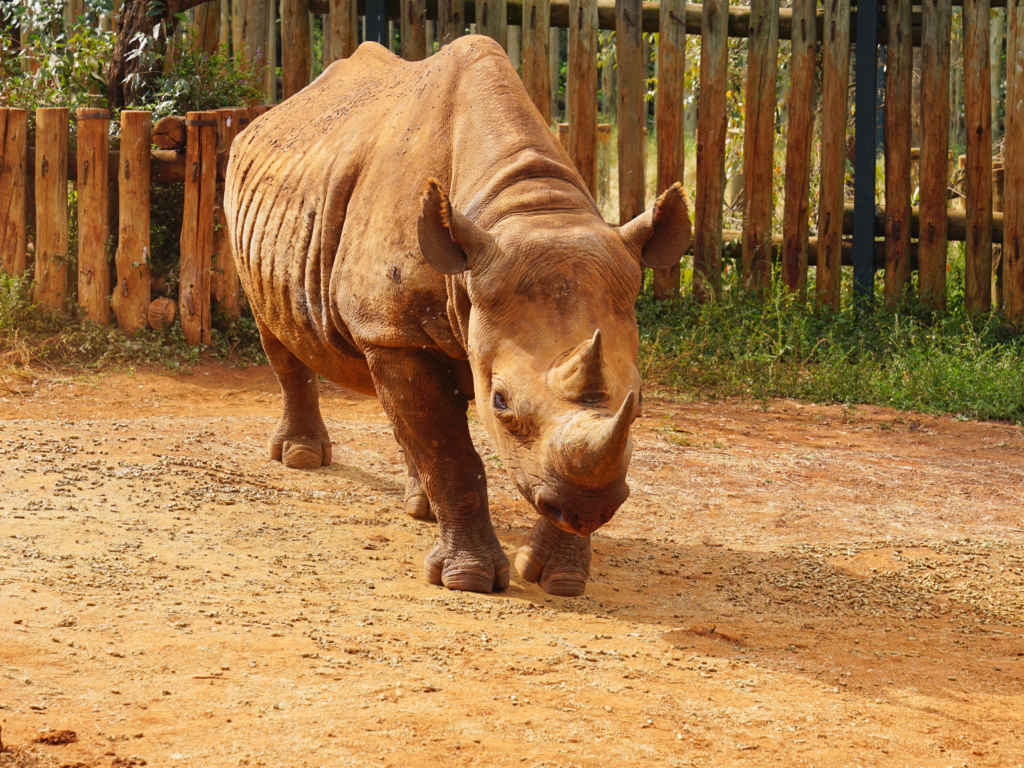
Caring for growing elephants is a round-the-clock commitment. Even following their graduation from the nursery unit in Nairobi, three-year-old calves are transferred to one of Sheldrick’s three reintegration units for their next step of rewilding. Based in Tsavo East National Park and Kibwezi Forest, these units have the space the orphans need to return to the wild. Most importantly they are in areas home to wild elephant herds! There the orphaned elephants are gradually weaned and learn the skills to live as wild elephants. Rewilding is a gradual process that can take many years and is individual to each elephant’s needs. The commitment Sheldrick Wildlife Trust has made to rescuing, rehabilitating, and releasing their wild orphans is rightfully world-famous, and the aspiration of many conservation organizations.
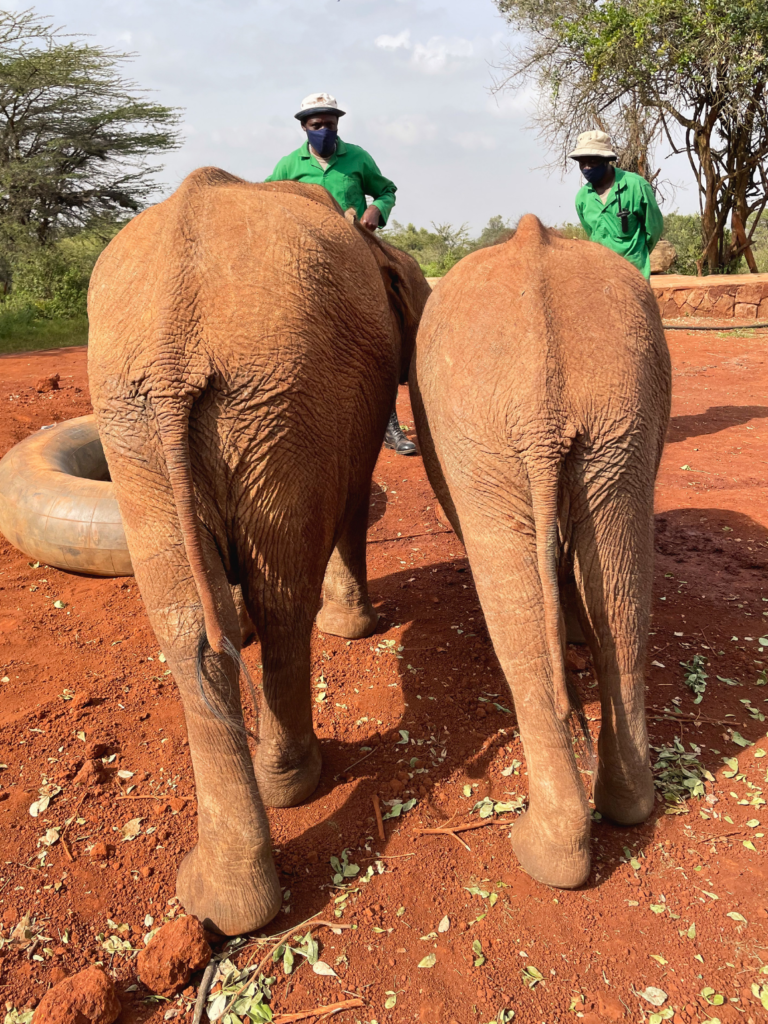
How to Support Sheldrick Wildlife Trust
Sheldrick Wildlife Trust is an organization that has earned my highest praises and support. The impact they have made over the course of four decades has completely shifted Kenya’s protection of their precious wildlife. Everything from their skilled team members to the properties they manage as eco-lodges and rewilding sites, Sheldrick exceeds all expectations as a conservation organization. To support their work, please consider adopting one of their orphans for yourself or as a gift. These digital adoptions include a personalized adoption certificate, monthly email updates and watercolors, and exclusive access to keeper diaries. Adopting an orphan costs just $50 USD each year, and is a great way to support Sheldrick Wildlife Trust while staying connected with their unrivaled mission.
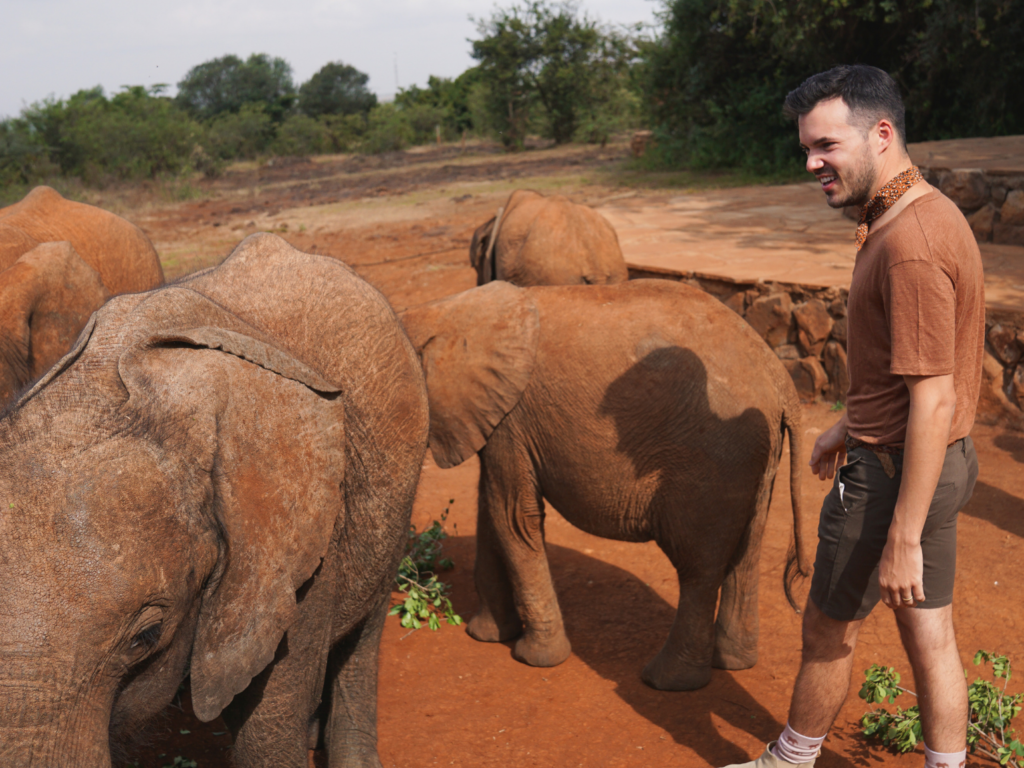
Ethical Elephant Encounters in Kenya
Obviously, the most ethical elephant encounter in Kenya is observing them in the wild. The country is famous for its elephant herds in Amboseli, Masai Mara, and Tsavo. Thankfully Kenyan tourism has not followed the direction of many southern African nations like Botswana, South Africa, Zambia, and Zimbabwe in offering unethical elephant activities. Many operations in these countries offer cruel elephant back safaris and interactions are often mistaken as wholesome and enjoyable for the elephants. Kenya remains free of this elephant exploitation within the tourism industry.
Sheldrick Wildlife Trust is not the only ethical elephant encounter in Kenya, about 340 miles (550 km) to the north lies Reteti Elephant Sanctuary . This community-owned grassroots initiative is designed to rescue and release orphaned elephant calves in the surrounding Samburu region. Having begun in 2016, Reteti is entirely local with an elected board from the community that oversees all operations, and only employs caretakers from the community to care for the elephants. They offer daily tours to visitors interested in discovering their work in person. Each group is paired with an elephant caretaker who leads a tour of the grounds, including watching the calves receive their bottles and enjoy playtime in the mud wallow. Visiting Reteti Elephant Sanctuary helps support their mission and strengthens the community by means of positive tourism impact in the region.
Additional Resources for Ethical Wildlife Travels:
How to avoid elephant abuse while traveling.
- 3 Tip Checklist for Animal Friendly Travel
Giraffe Manor: Ethical Wildlife Encounter or Not?
- Video Review: Giraffe Manor
Leave a Comment Cancel reply
Save my name, email, and website in this browser for the next time I comment.
You May Also Like
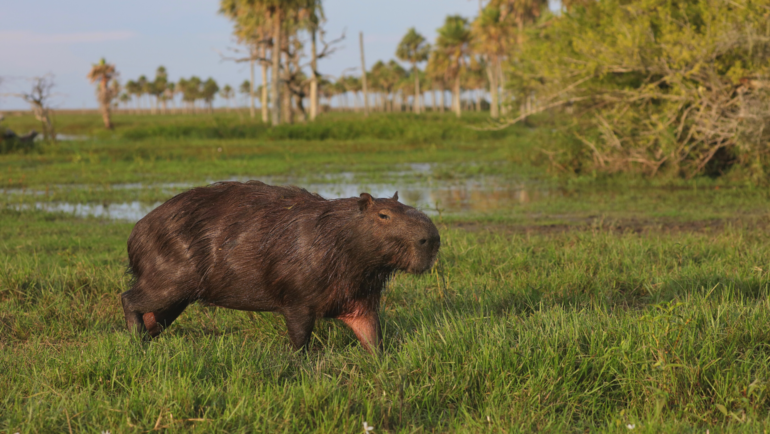
Ethical Wildlife Travels Bucket List: 2022
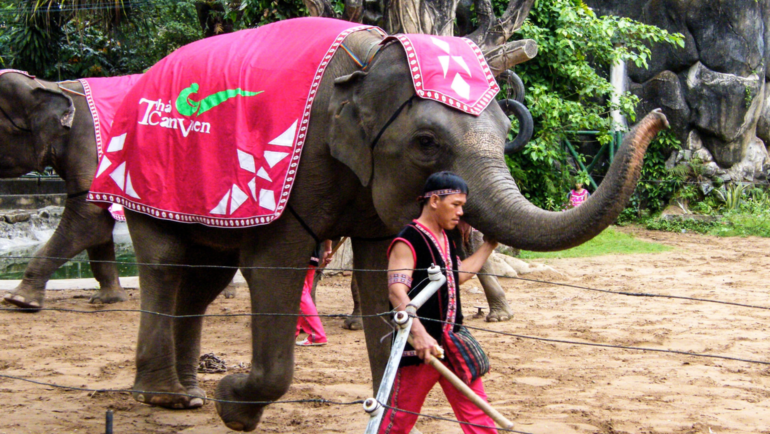
Video: Everglades National Park
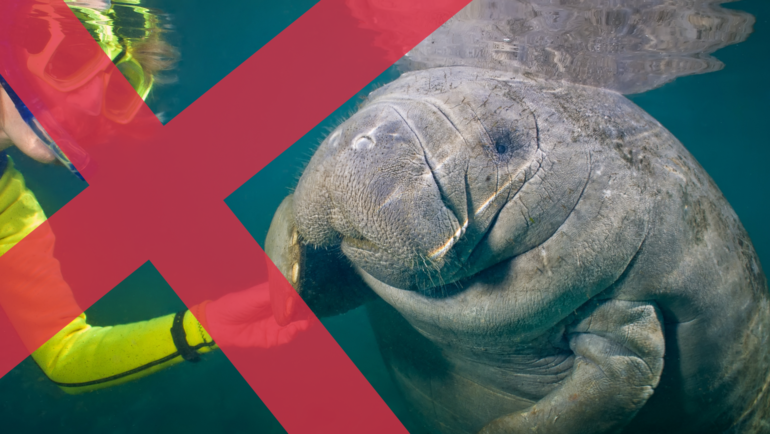
Are We Loving Manatees to Death?
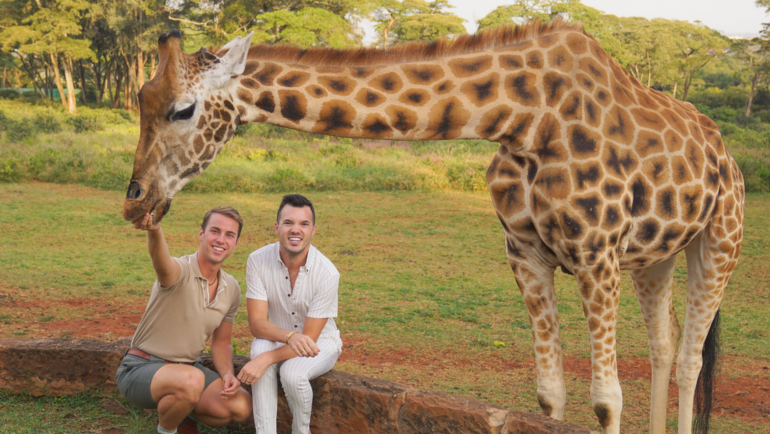
Saving Vietnam’s Moon Bears
This website uses cookies to ensure you get the best experience on our website. Learn more
- Australian Dollars
- British Pounds
- Canadian Dollars
- New Zealand Dollars
- South African Rands
- Swiss Francs
- U.S. Dollars
Talk to an expert +44 203 405 6666 Lines open now
Nairobi Elephant Orphanage visit
Overview: Nairobi Elephant Orphanage visit
Rearing orphaned rhinos and elephants, sheldrick wildlife trust visit details, photo gallery.
What to look forward to.
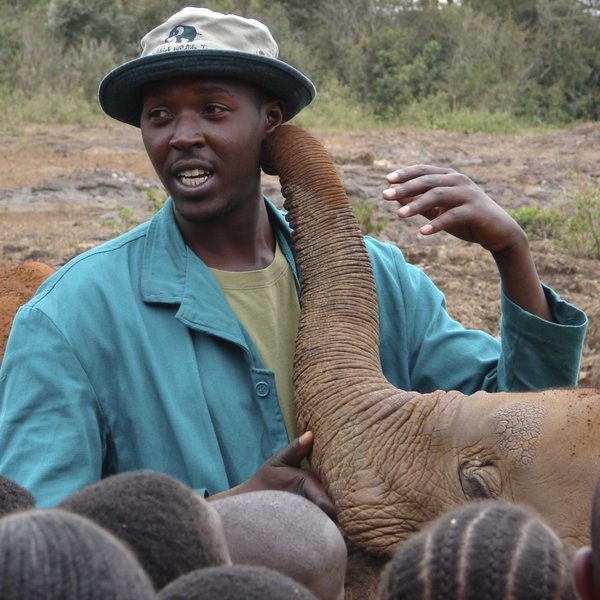
The DSWT Elephant Orphanage is a highlight for many people visiting the city.
Proceedings usually start with a bit of elephant football…
…before the keepers bring their charges over to meet the day's guests.
Each keeper talks about his orphan…
…and explains the importance of the close relationship between the baby elephant and the surrogate mother.
Nairobi Elephant Orphanage visit reviews
49 independent first-hand comments from our travellers.
31 Mar 2024
"Nairobi Elephant Orphanage visit review"
Overall rating: Excellent
18 Mar 2024
Overall rating: Good
27 Jan 2024
16 Jan 2024
Overall rating: Poor
24 Jan 2024
Overall rating: Average
23 Oct 2023
12 Oct 2023
See all Nairobi Elephant Orphanage visit reviews
Ideas for holidays which can include Nairobi Elephant Orphanage visit
Add this experience to these trip ideas or contact us to start planning your own tailor-made safari to Kenya.
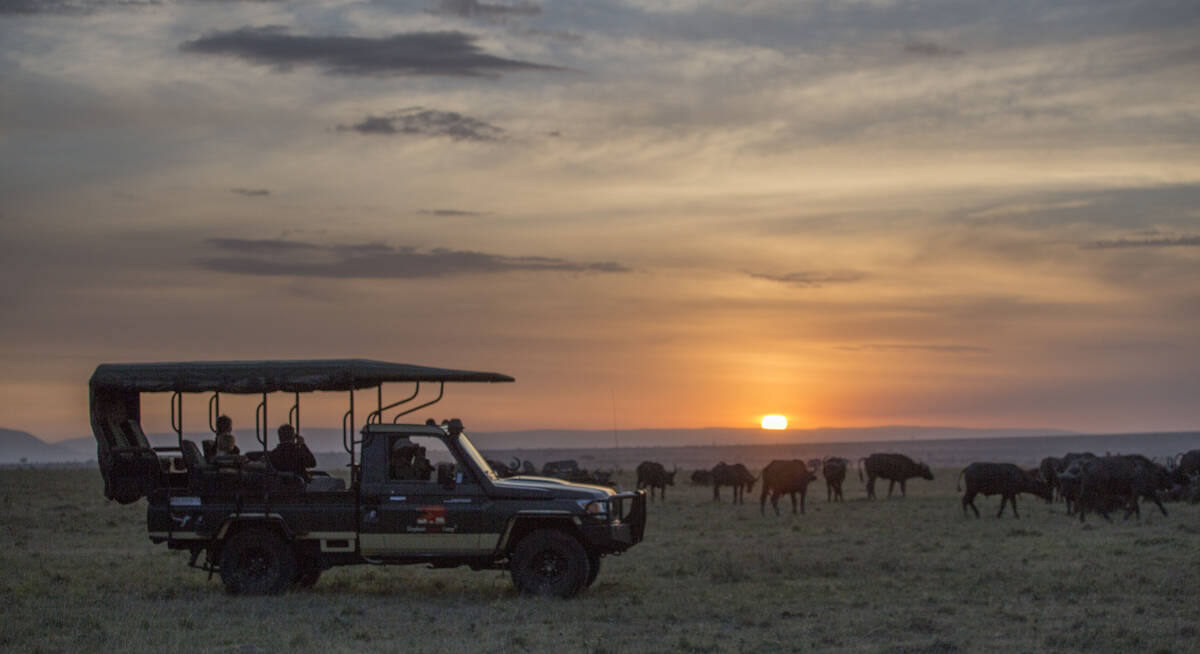
Black Kite Fly-in Safari
10 days • 4 locations NAIROBI AIRPORT TO NAIROBI AIRPORT
Explore Kenya in-depth with visits to Nairobi and Meru national parks, the Mara Conservancies and Amboseli. Nestled in remoter regions, four camps provide fantastic access to rich game, a range of activities and beautifully diverse landscapes.
US$9,260 - US$11,960 per person
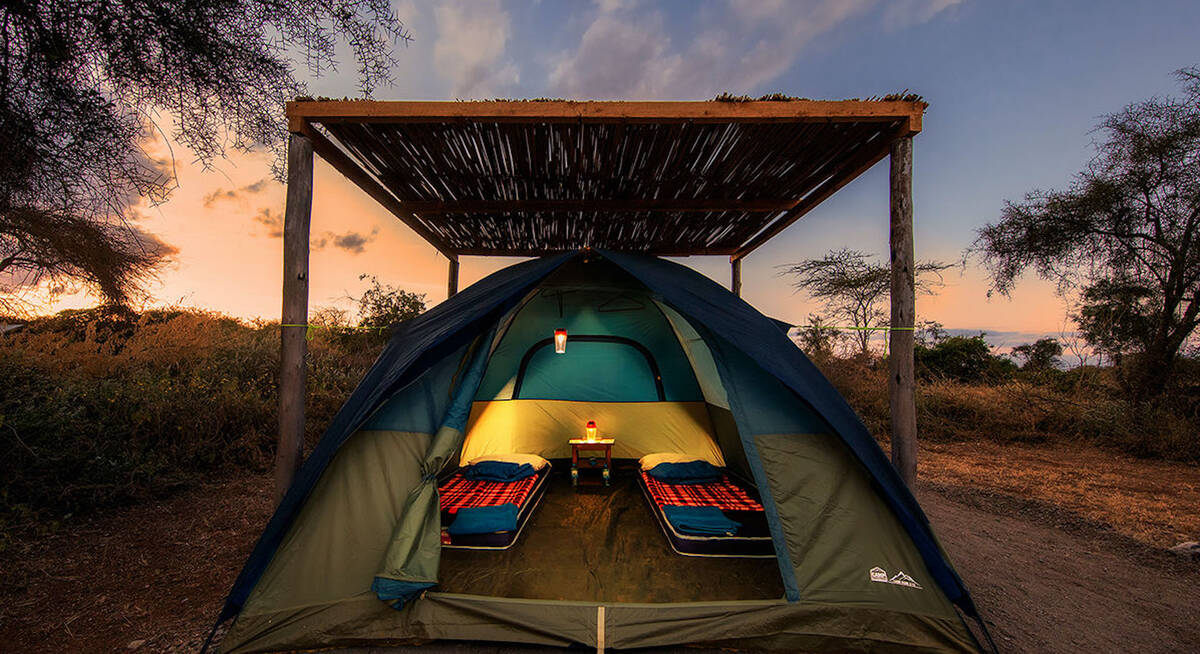
Gabar Goshawk Fly-in Safari
Experience Amboseli, the Maasai Mara ecosystem and Laikipia during this economically priced safari. Two simple camps offer adventure before a stopover in Nairobi and a final stay in the charming, wildlife-rich Il Ngwesi Eco-Lodge.
US$5,800 - US$6,090 per person
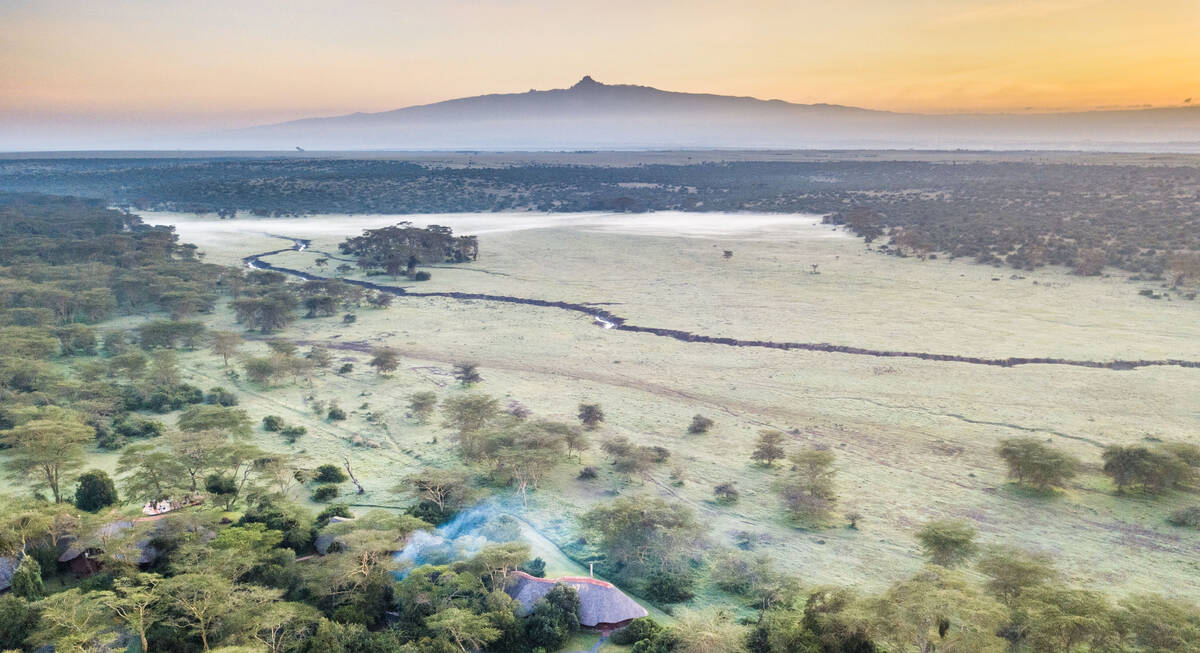
Rothschild Giraffe Safari
8 days • 3 locations NAIROBI AIRPORT TO NAIROBI AIRPORT
A example of a luxury Kenyan safari, starting at the iconic Giraffe Manor before fabulous stays on the spectacular Solio Reserve and Sala’s Camp in a remote corner of the Maasai Mara.
US$11,720 - US$16,510 per person
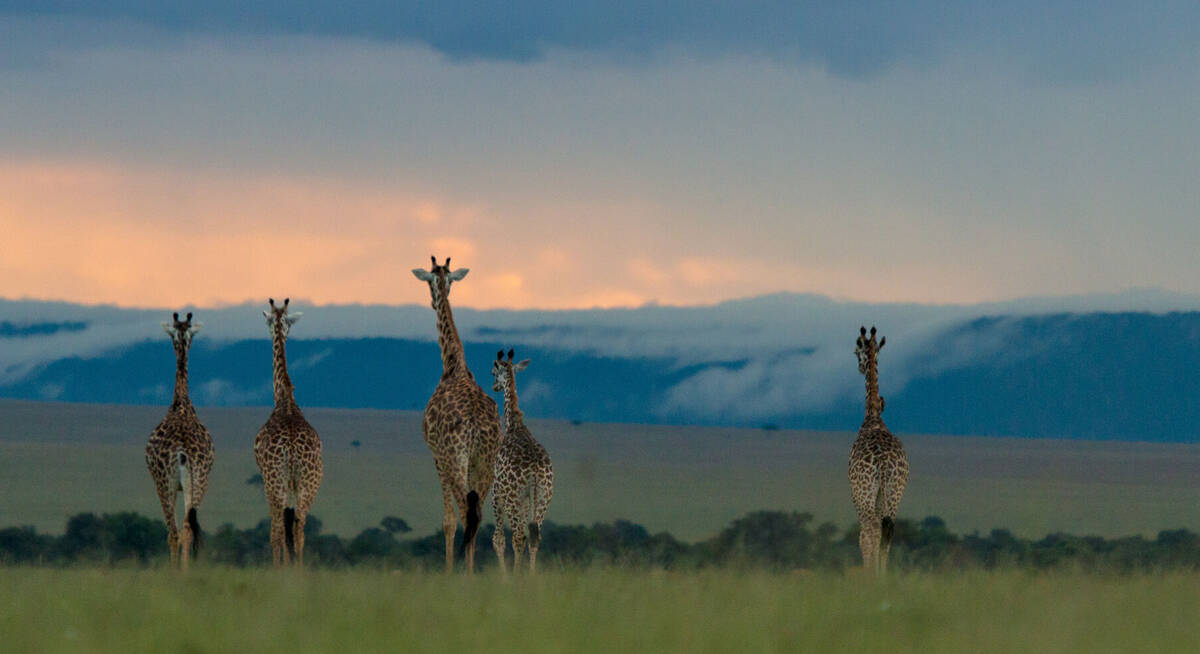
African Finfoot Fly-in Safari
7 days • 3 locations NAIROBI AIRPORT TO NAIROBI AIRPORT
After a unique start in Nairobi National Park, classic, luxurious camps combine for a high-end and exclusive safari in fantastic wildlife destinations.
US$9,900 - US$16,050 per person
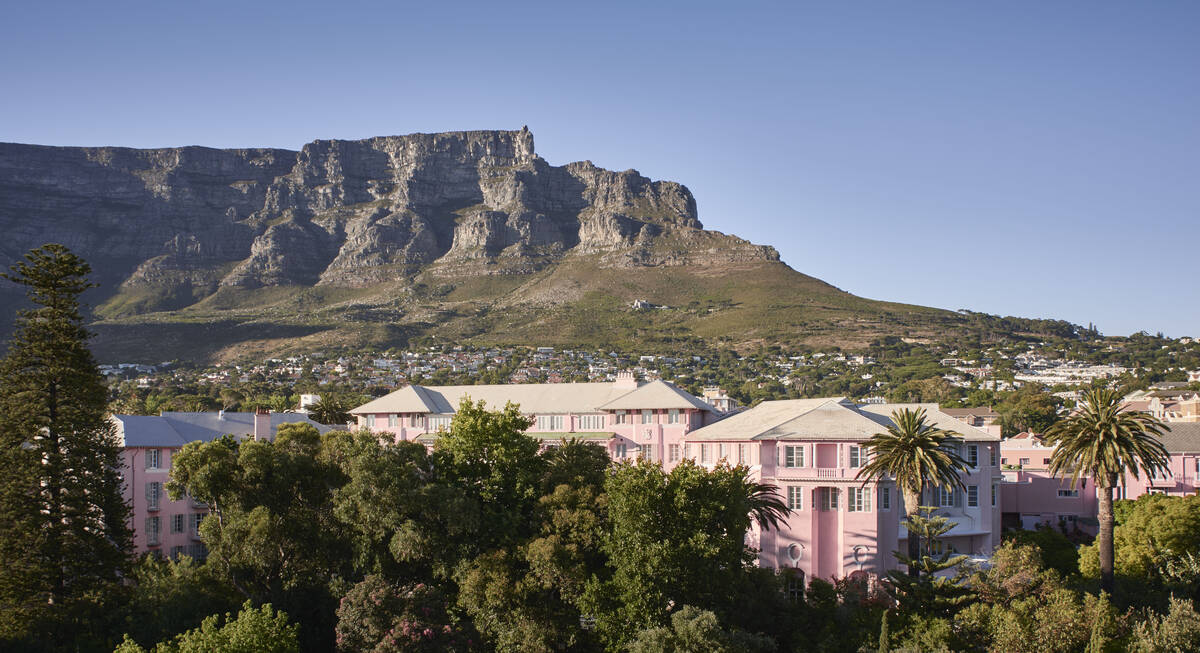
The Highlights of Africa
17 days • 7 locations CAPE TOWN AIRPORT TO KIGALI AIRPORT
An epic adventure taking in some of Africa’s most incredible sights and wildlife experiences, from Cape Town to the Okavango Delta, Victoria Falls, the Maasai Mara and an encounter with mountain gorillas.
US$14,330 - US$18,200 per person

Need inspiration?
Let our trip chooser narrow down the options for you
Other excursions in Kenya
Inspiration and great ideas for other experiences in Kenya to include in your safari.
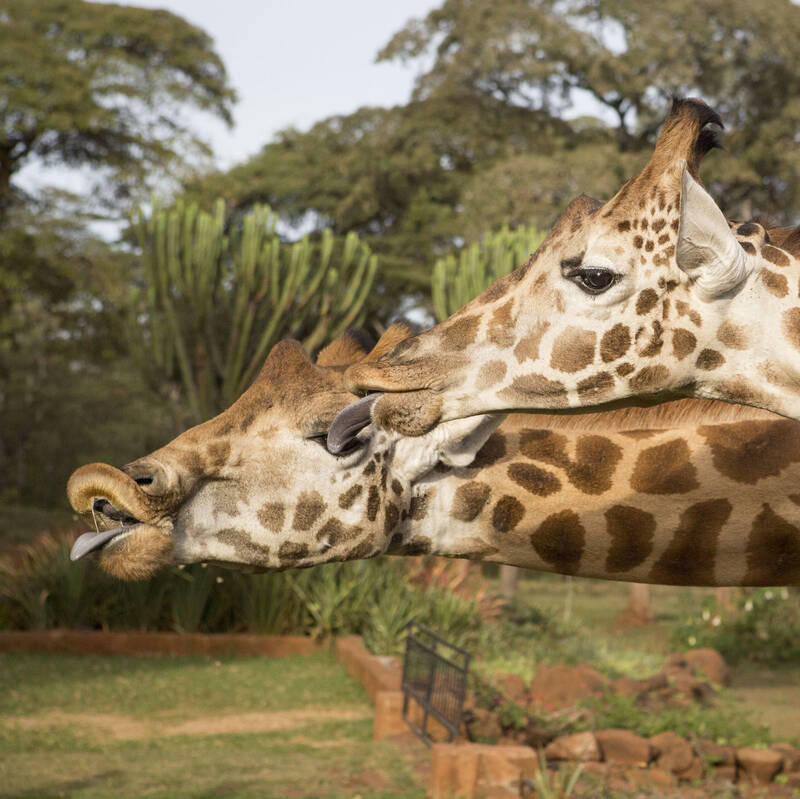
Nairobi Giraffe Centre visit
One hour visit is generally recommended
Visit the AFEW Giraffe Centre for an eyeball-level encounter with gentle Rothschild giraffes. They visit this tree-level platform to be fed pellets.
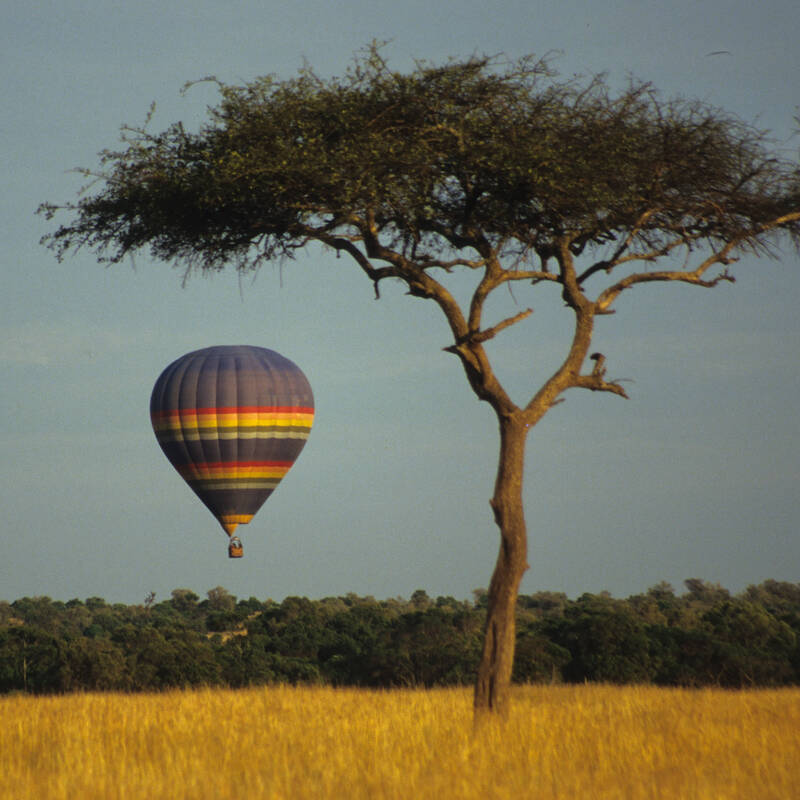
Balloon flight over the Mara
3 hours in total - morning only
With the sun rising over the Loita Hills, you scramble into the balloon basket for the start of a once-in-a-lifetime experience. You’re about to go drifting with the breeze above the trees and plains of one of the world’s greatest wildlife regions.
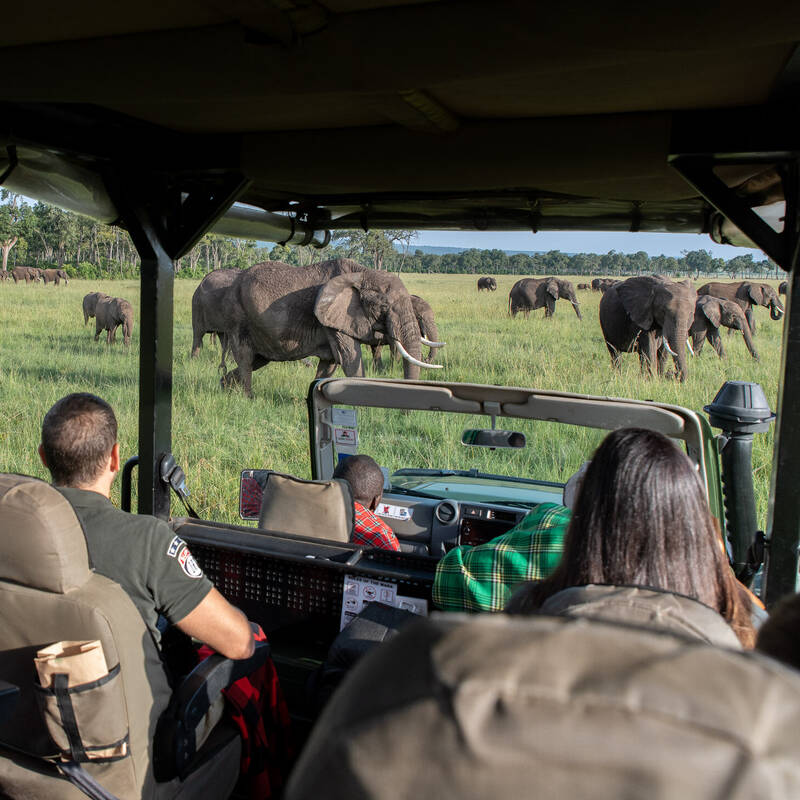
Safari in Maasai Mara National Reserve
All day from sunrise to sunset
If you're not staying in the Maasai Mara National Reserve itself, you're likely to be staying in one of the outstandingly wildlife-rich Maasai-owned private conservancies just outside the reserve boundary. A full-day game drive in the reserve gives you the chance to visit the Mara River and see some of the reserve's fabled wildlife locations.
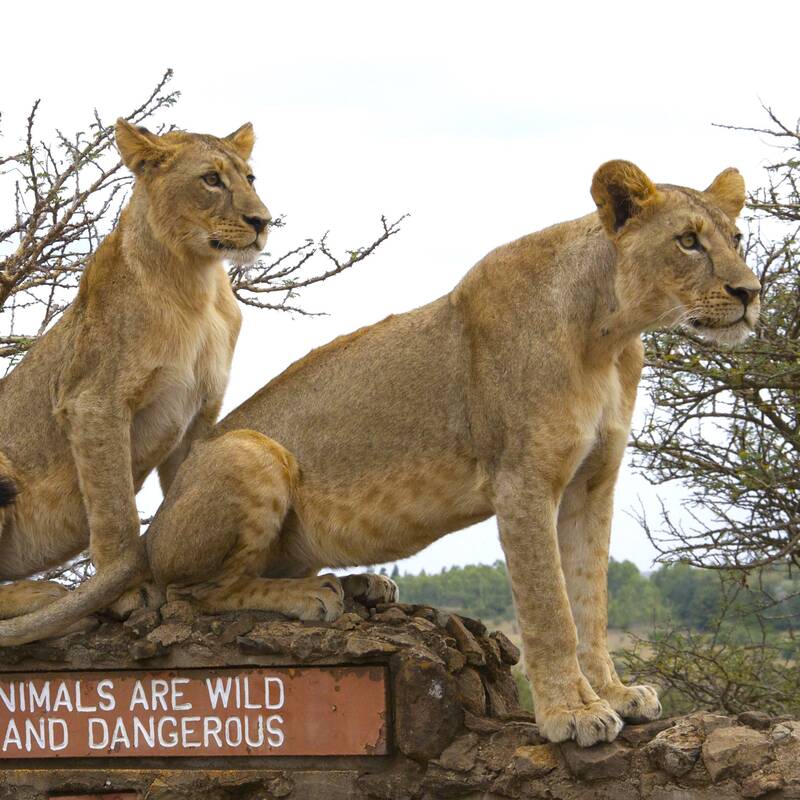
Safari in Nairobi National Park
Half day - AM or PM, or full day
It is truly remarkable that the plains and woodland of Nairobi National Park, an area of around 70km² (some 17,000 acres) should exist in a near-natural state so close to the city that in any other conurbation they would just be suburbs.
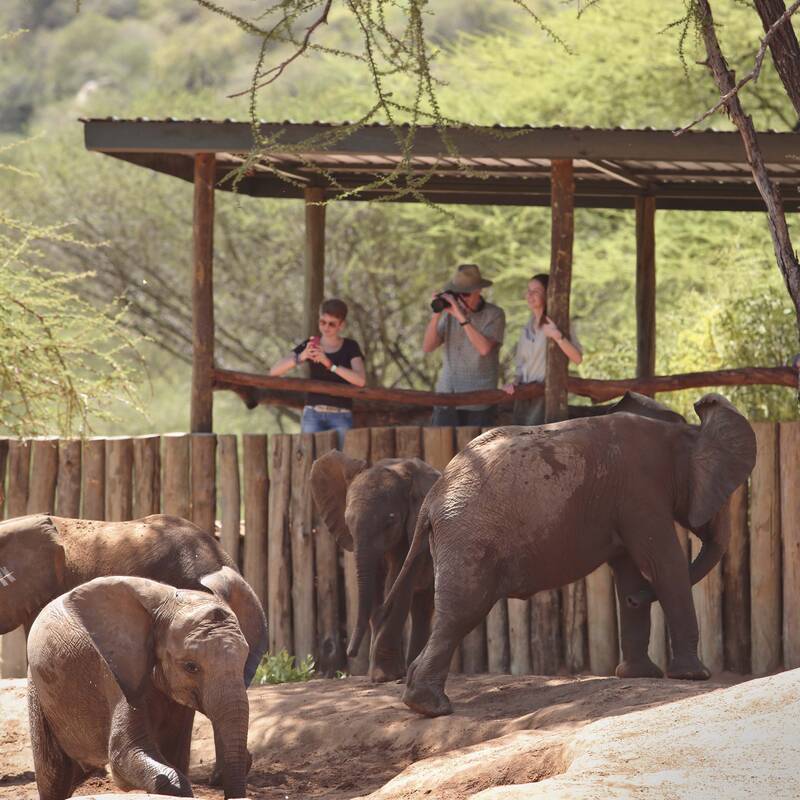
Reteti Elephant Orphanage visit
One-and-a-half hours, plus transfers
Visit the community-run Reteti Elephant Sanctuary in Samburu, for an intimate experience meeting the orphaned baby elephants who have been rescued from the surrounding regions. They are hand-reared by Samburu keepers, until they are ready to be released back into the wild.
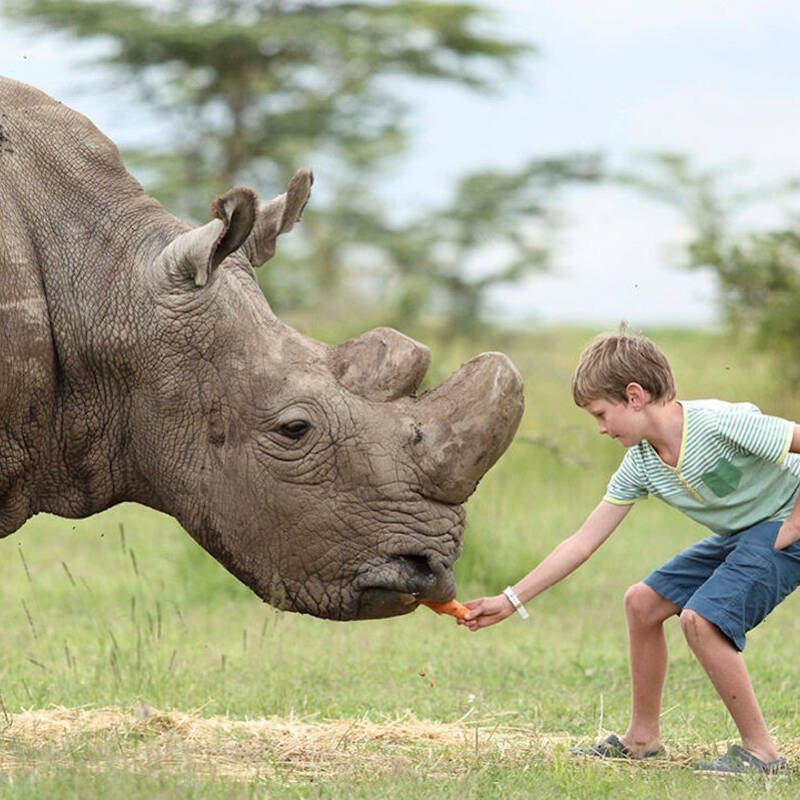
Northern White Rhinos visit
One hour, usually as part of your drive
Visit the Endangered Species Enclosure at Ol Pejeta Conservancy for a close encounter with the last two remaining northern white rhinos. You can visit either by game drive vehicle or visit on horseback if you're an experienced rider. Other rare species include Jackson's hartebeests and Grevy's zebras.
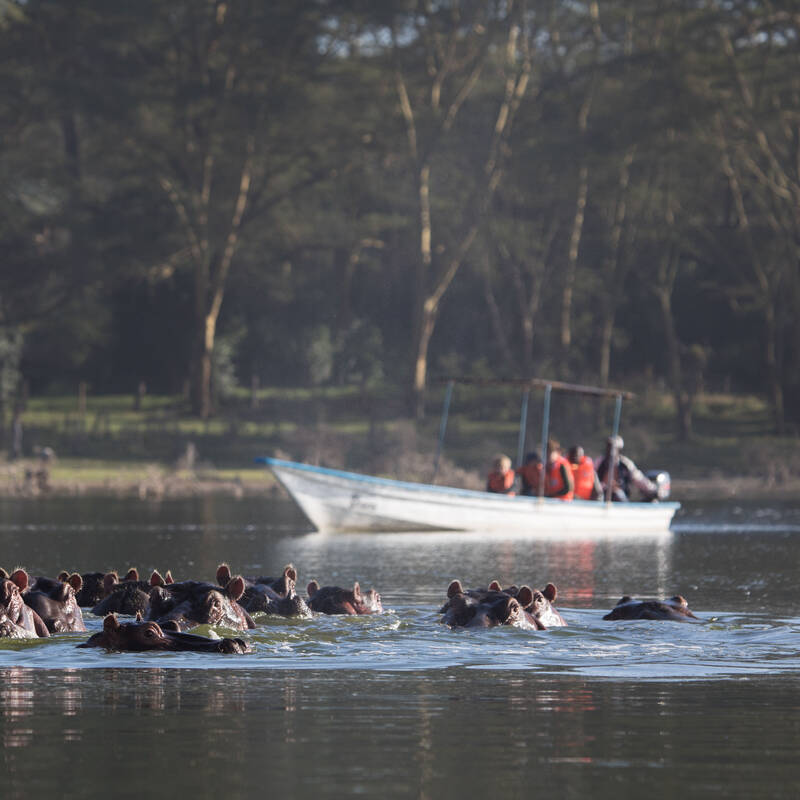
Lake Bogoria National Reserve
Half or full day
Seeing the Rift Valley's iconic pink flocks of flamingos massing on one of the region's lakes can be a somewhat hit-and-miss affair since lake water levels rose after about 2014 and the ecology of several of them changed significantly. Lake Bogoria, however, in the northern Rift, still usually retains some large flocks of many thousands of lesser flamingos.
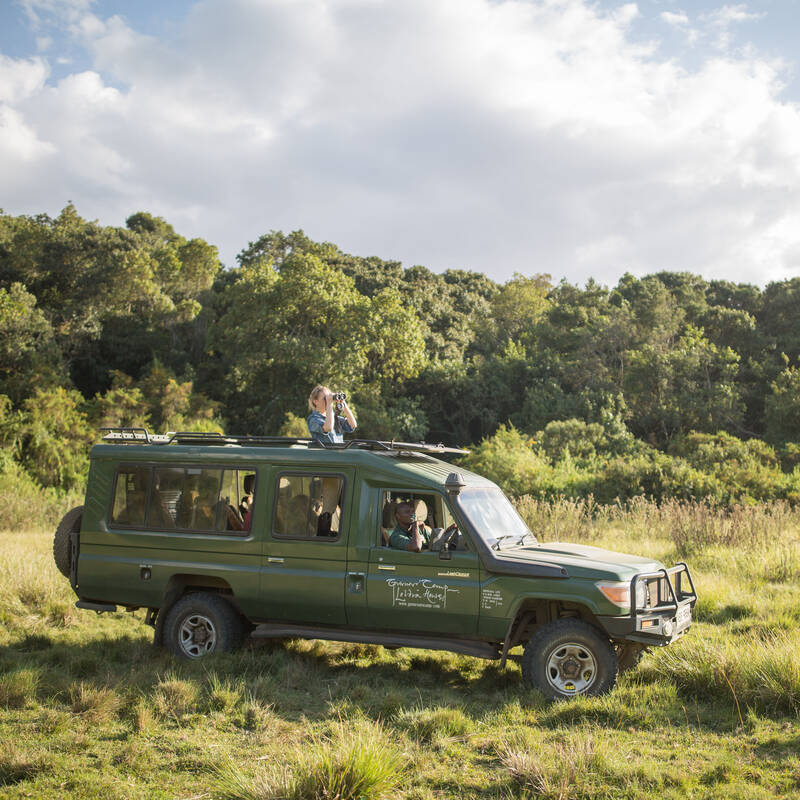
Lake Nakuru Safari
Drive into one of Kenya's best-known national parks to explore the lakeshore, woodlands, cliffs and plains around this iconic lake. While the flamingos may no longer be here, Nakuru has some key mammals, including both black and southern white rhinos, lions, leopards and Rothschild giraffes.
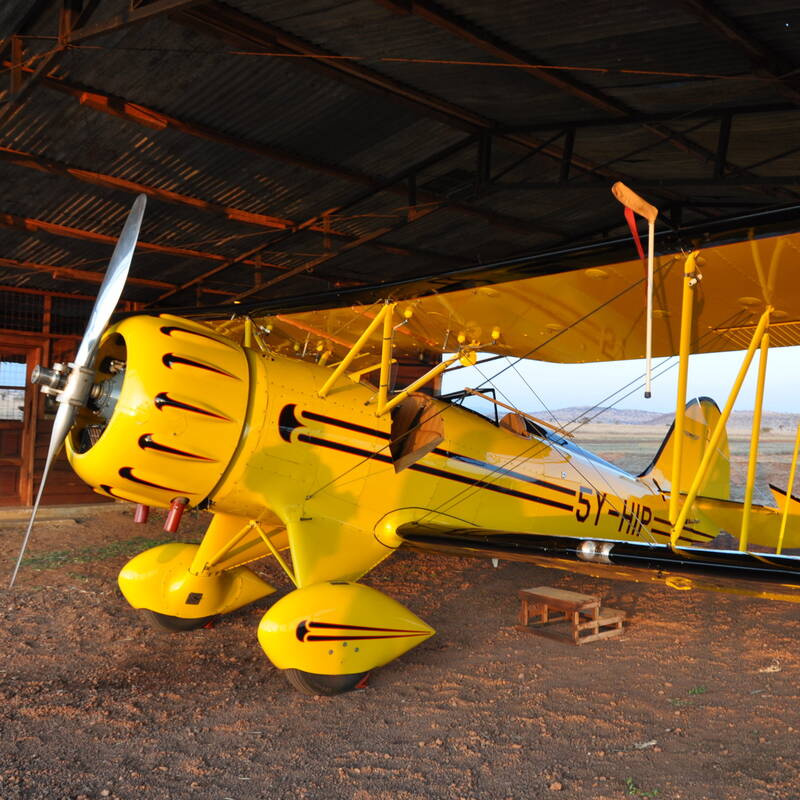
Scenic Biplane Flight on Lewa Conservancy
30 or 60 minute flights
Soar high and fly low over the rolling hills and plains of Laikipia’s famed Lewa Conservancy, on a scenic biplane flight. Offering you the chance to spot wildlife from the air, this flight takes place in an open-cockpit WACO biplane – a truly unique excursion in Kenya.
Kenya fact file
Below, you'll find useful information to help you prepare for your time in Kenya

LGBT travel in Kenya
Attitude, the law & our experiences
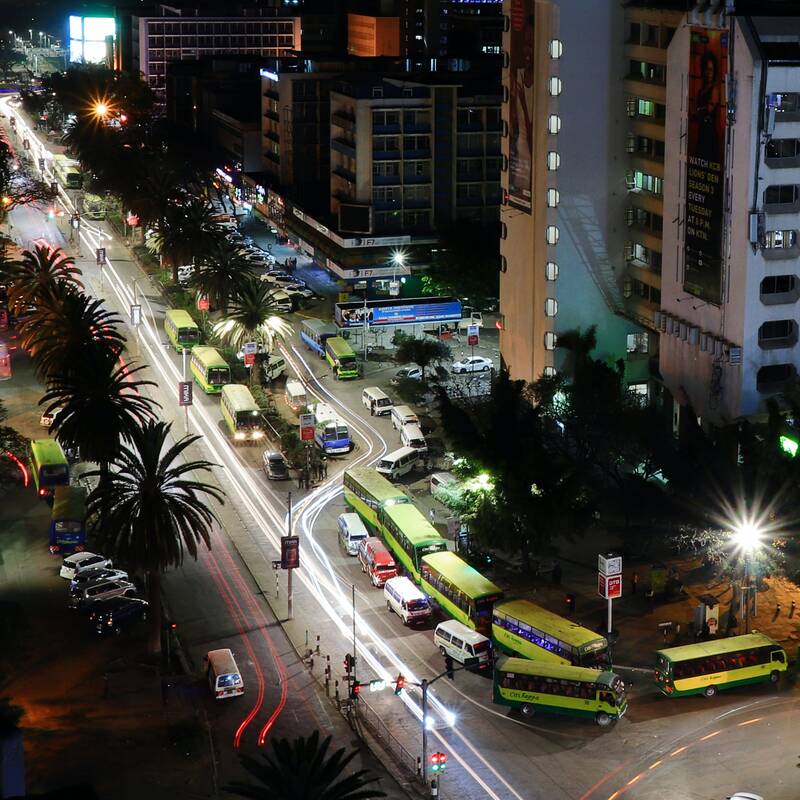
Safety in Kenya
Keeping safe, our experiences & our advice

Tipping in Kenya
Expectations & guidelines for tipping

Weather & climate
The best time to visit Kenya
Login to Expert Africa
Sign in with password
Sign in with email link
New to Expert Africa? Create an account
Forgotten your details?
It's free & quick to set up
- Save your wish-list
- Send us an enquiry
- Pay online for your trip
- Subscribe to our newsletter
- Give us feedback on your trip
- Full site benefits of the site
Need some help? Talk to our team

Nairobi’s Elephant Orphanage: Visit the Sheldrick Wildlife Trust
Kenya is home to some of the most diverse groups of animals in the world. The capital city of Nairobi has a number of wildlife conservation projects that are open to visitors. When researching one to visit, please make sure that the agency is an ethical conservation site and not a place that drugs animals. The most well known is Nairobi’s elephant orphanage i- The Sheldrick Wildlife Trust (formerly David Sheldrick Elephant Orphanage). Here’s how to visit the Sheldrick Wildlife Trust.
Be sure to check out my simple wildlife photography tips so you can get the perfect photo of these incredible elephants.
If you like this post, be sure to sign up for my e-mail list for travel inspiration (and get your FREE budget printable), or connect with me on Facebook , Instagram , Twitter , or Pinterest .
This post contains affiliate links, meaning if you purchase something from here I may get a small commission (at no cost to you) which I am grateful for.

The creation of the Sheldrick Wildlife Trust
About 30,000 elephants are poached every year in Africa. 900 rhinos were poached in 2018 alone. The ivory trade is a serious issue for African animals. Animal orphanages were established in response to animals being orphaned. The Sheldrick Wildlife Trust was created in 1977 and does more than just orphan work. They have numerous anti-poaching programs including aerial surveillance and a canine unit. They also work with local communities who live alongside wildlife and work to save habitats.
Fun Fact: Roughly 60% of baby elephants rescued under 2 years old survive, but those that do have a 98% chance of survival.
The Sheldrick Wildlife Trust cares for the animals 24 hours a day, 7 days a week, and provides veterinary services too.

Getting to the Sheldrick Wildlife Trust
The easiest way to get to the elephant orphanage is by taxi. For about $25 (or 2000 Kenyan shillings) you can get a round trip taxi ride. The Sheldrick Wildlife Trust is well known, so most taxi drivers know where it is.
If your safari includes time in Nairobi, then you may be able to add it as an excursion to your safari. Sunworld Safaris, the company we used, organized our trip without issue & I cannot recommend them enough!
You can also try one of these tours through Viator:

When to visit & Admission information
The elephant orphanage is open every day of the year, except for December 25th. You can only visit for one hour though from 11 am-12 pm. This is when the elephants come out and the staff tell you about their procedures, the elephants’ stories, and the importance of conservation. Admission only costs $7 (or 500 Kenyan shillings). The Sheldrick Wildlife Trust is cash only.

Read all about our Kenya safari here.

Fun Fact: Every baby elephant sleeps with a person every night!
The elephants.
The keepers bring out the elephants in groups based on age. The first group that comes out is the youngest elephants ranging in age from 2 months to 2 years, then the older elephants. The keepers discuss the stories of the elephants – how they came to be orphans – as well as the work being done to protect these beautiful animals.

Fun Fact: Once released, some of the animals come and visit! An ex-orphan, Wendi , brought her newborn baby to the orphanage to visit!

Throughout the visit, guests are roped off from the elephants. They would be enjoying a nice mud bath, playing with each other, or drinking their milk.

If the elephants come close to the humans, then you may reach out and pet them. Some of them intentionally walk around the ropes to get pats on their back!
For a closer look at how the Sheldrick Wildlife Trust rescues these baby elephants, check out their YouTube page:
How can you help?
Proceeds from visitors go to the efforts to protect African wildlife, but there is more that you can do. You can adopt an orphan elephant, rhino or giraffe for only $50/year. You can check out their website for the animals currently in the rescue to read their stories and select one. If it’s too hard to choose, you can also have them help you decide. With your adoption, you get monthly updates, access to keeper’s notes, and if you do decide to visit there is a special time (5:00 pm) for adopters.
You can also purchase Dame Daphne Sheldrick’s Memoir, Love, Life, & Elephants for an inside glimpse into her amazing life!
Save “Visit the Sheldrick Wildlife Trust” for later!

Have you visited an ethical elephant orphanage?
About the author.
16 thoughts on “Nairobi’s Elephant Orphanage: Visit the Sheldrick Wildlife Trust”
Oh my gosh, the elephants drinking from bottles are just adorable! My nephew’s favorite animal is an elephant. We visited an elephant rescue in Florida but this looks so much better!
Elephants are the best!! These are wild elephants who will be released back in the wild when they’re old enough, so it’s definitely a unique experience to see up close! I hope you & your nephew get to visit!
I’m looking to go to Kenya in June so I’m definitely going to be saving this post for later. I loved reading how well these elephants are taken care of and how the baby elephants sleep with someone every night!
Have you been able to make the trip post pandemic travel shutdown?
Oh my gosh. Your photos are adorable! I love their blanket/sweaters to keep them warm. So cute!! I appreciate you letting the readers know that it is cash only. It would be quite unfortunate to show up and not be able to visit the orphanage because you didn’t have cash. I’m also surprised that the entrance fee is so affordable. I would have thought it would have been significantly more expensive to have an experience like this one. It seems like this orphanage is doing really good work and making a positive change in the world. I will definitely be visiting it when I go to Kenya.
Yes they want people to come visit because the goal is education! They do a lot of amazing work and I suggest following them on social media to see their rescue stories and updates on animals!
So special. It’s adorable to think someone sleeps with them each night and that photo with them wearing blankets is so precious. Thanks for sharing.
I also visited this place in September 2018. It’s so important to give back and make a difference. I absolutely love elephants! Thanks for sharing it.
Awesome! I hope you had a wonderful time!
This is so freaking adorable! The baby elephants get slumber parties at night with a human, that’s so sweet. I hope they are for real a sanctuary and are treated well.
They are a real sanctuary and take very good care of the animals. You’re not even allowed to pet them unless the elephants come to you. I also like that visitors are only allowed for 1 hour a day, so they’re not for show – it’s only during play and milk time! Once they’re old enough, they’re released back into the wild!
Great information. I like that gradually more awareness is being shed on elephant treatment, and that centers like this are able to use tourism to help raise money. Definitely seems like a great option while in Nairobi!
This looks like such an amazing thing to do! So sweet to see the elephants but also sad that there’s a need for orphanages.
I keep seeing so much about Kenya in the travel-sphere and I’m becoming more and more excited to go someday soon. This is ABSOLUTELY something that I would want to add to my bucket list. The older elephants are awesome and everything, but I don’t think I’d be able to get enough of the baby elephants! They are so adorable! What an amazing experience!
Pingback: Kenya Safari: What you need to know
Pingback: Kenya Safari Accommodation: Mara Bush Camp Review
Leave a Comment Cancel Reply
Your email address will not be published. Required fields are marked *

Home > Kenya Safaris > Elephant Orphanage
Visiting the Elephant Orphanage, Nairobi: Prices 2023 ~ 2024
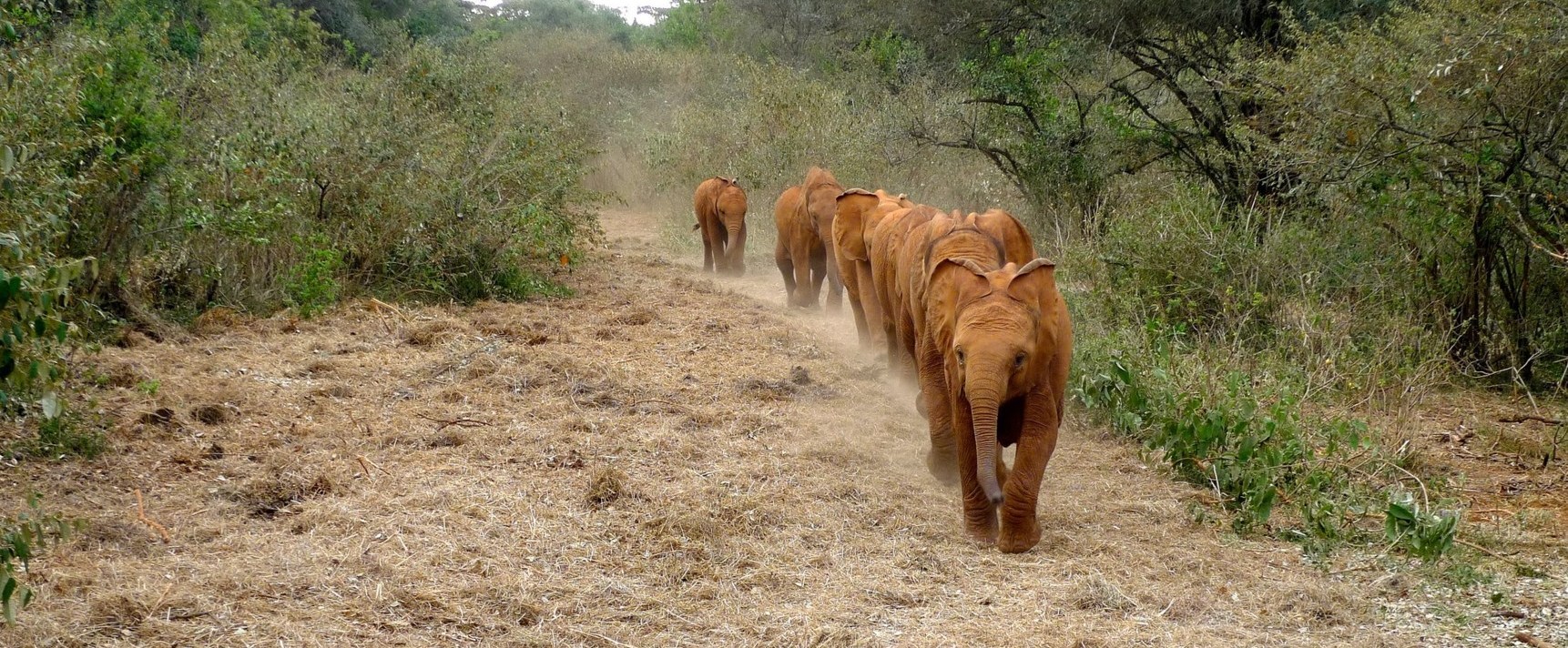
Photo Credit - Chris Nener
This is an amazing and fun tour in Nairobi that also gives one truly Heart- touching memories. The David Sheldrick Wildlife Trust Elephant Nursery bordering Nairobi National Park offers safe haven to orphaned baby elephants rescued from parks and reserves in Kenya. The nursery cares for the young elephants, including hand rearing them until they are old enough to be gradually introduced back to the wild in Tsavo East National Park among other places. The Entry Fee is Kshs 1500/- (US$15) per person 12 years and above, and Kshs 500/- (US$5) for those under 12 years of age. Visiting timings are 11 am to 12pm daily ( 1 hour). As the orphanage lies on the outskirts of Nairobi city, off Langata road, it is advisable to allow for enough time to get here. Contact Us using the orange Enquiry button below to arrange a private visit here. You may also opt to for Nairobi City Tour - Visit Elephant Orphanage & Giraffe Center or combine with Nairobi National Park Safari Tour / Karen Blixen Museum Visit and a stop for lunch at a charming restaurant in the same area. Click here to see our Masai Mara Safari tour and here for Hiring a Car in Nairobi with a Driver. For information on Masai Mara this is a great resource.
- Price & Dates
- Delight in watching baby elephants rescued from the wild, being bottle-fed milk by their human rearers, as they play and frolick in front of visitors at the David Sheldrick Elephant orphanage. - Contribute towards a noble wildlife cause – your entry fee goes towards meeting the costs of running the nursery. You also have the opportunity to adopt one of the orphaned elephants.
Our Driver-Guide collects you from your hotel at 9.30am for transfer to the David Sheldrick Wildlife Trust Elephant Nursery at Nairobi National Park, in time for their opening at 11am.
Spend an hour at the nursery viewing the baby Elephants as they are fed and play with each other, in an open exhibition ground where visitors are free to watch closely and take photos.
At 12pm we will transfer you back to your hotel.
Please Note:
The David Sheldrick Wildlife Trust Elephant Nursery is open daily for visitors only from 11am to 12pm [ 1 hour].
Members of the Public may choose to Foster specific baby Elephants in the Nursery and may be granted access to visit the nursery during late afternoon hours. For information on becoming a Sponsor, please visit http://www.sheldrickwildlifetrust.org/
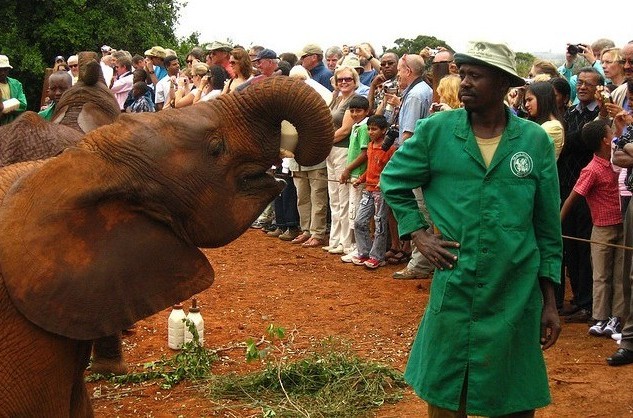
price & dates
Group of 2 persons: usd 45 per person: group of 3 persons: usd 30 per person : group of 4 persons: usd 25 per person : group of over 6 persons: usd 20 per person : .
Price Includes :
Return Transfers from any Nairobi Hotel to the David Sheldrick Elephant Nursery in a Safari Tour Van or Sedan vehicle in case of 2 persons, Services of an English speaking Driver-guide, and Entry Fees for yourselves.
Prices Exclude:
Visit to Giraffe Center { optional at extra cost }, Meals, Personal and Personal Effects Insurances and all items not listed as included .
To Enquire about this Safari, tell us How many you are [ Adults / Children], required Room Plan, and your Dates of Travel - we shall reply promptly, usually before 12 hours: In case of Children please state the age at the time of Travel:

What to Expect When Visiting Sheldrick Elephant Orphanage Kenya?
If you are visiting Kenya for a safari, you will likely be flying in or out of one of the Nairobi airports ; JKIA for international travel or Wilson for domestic travel. Therefore, while in the city, you should allow time in your Kenya safari itinerary to visit the nearby orphaned baby elephants at the Sheldrick Elephant Orphanage in Nairobi .
As someone who has had the incredible opportunity to visit the Sheldrick Elephant Orphanage, I can assure you that it is a must-do activity in Nairobi , particularly for animal lovers.

The Elephant Orphanage Nairobi booking website is informative. Nonetheless, before visiting I hoped to find more details from people who had personally visited the elephant orphanage in Kenya .
As a result, this article will take you through all the information you need to know about a Sheldrick Wildlife Trust visit. As you will soon learn, you cannot just show up and see the elephants.
You should ensure you allocate a free morning because you can only arrange a Nairobi Elephant Orphanage visit during their set visiting hours . I booked my Nairobi Elephant Orphanage visit for the end of my Kenyan safari on the day we were flying back to England because our flight was not until 11:00 PM.
If you would like to learn more about visiting Kenya, you can read these other resources, such as what to expect while on safari and what to pack for a Kenya safari .
Read on to find out more about how to make a Sheldrick Elephant Orphanage visit happen.

What is the Sheldrick Elephant Orphanage?

There are several common names for this elephant orphanage in Nairobi, Kenya. Officially, it is known as the Sheldrick Wildlife Trust, but it is also referred to as the David Sheldrick Wildlife Trust or even Daphne Sheldrick Elephant Sanctuary.
Daphne Sheldrick is the founder of the David Sheldrick Wildlife Trust, but it was named after Daphne’s late husband, David, who was a founding warden of Tsavo National Park and managed wildlife protection operations in Tsavo East.
Nowadays, the Sheldrick Elephant Orphanage is run by the daughter of Daphne and David Sheldrick: Angela.
However, the wildlife trust does not only care for elephants. It also raises endangered rhinos. Nonetheless, when you book a public visit to the wildlife trust, you will only see the elephants. But know that your donation is going towards the rehabilitation of elephants and rhinos.
The David Sheldrick Elephant Orphanage aims to locate and rescue rhinos, baby elephants without parents for various reasons, and other wild animals that require assistance.
The animals are transported to the nursery using planes, helicopters, or vehicles.
The elephant orphans are cared for 24 hours a day to gain their strength before they are reintegrated into protected conversation areas from around the age of three.
How to Visit Sheldrick Elephant Orphanage?

It is not possible to visit David Sheldrick Wildlife Trust without making a booking online .
There are two types of visits available at this elephant orphanage in Nairobi National Park .
Firstly, it is possible to attend during the public visiting hour , which takes place every day (except Christmas) at 11:00 AM.
To arrange a public visit, you must book a spot for each group member on the Sheldrick Wildlife Trust website . The dates are released approximately three months in advance .
Therefore, you should keep an eye on when your preferred date is approaching and be ready to book it on the day it is released, particularly if you are visiting on a weekend since these slots usually get taken first.
Read on to learn about booking Sheldrick Elephant Orphanage as part of a tour.
David Sheldrick Wildlife Trust Entrance Fee (Public Visits)
- 1,500 Kenyan Shillings or USD 15 – per person over 12 years old
- 500 Kenyan Shillings or USD 5 – per person under 12 years old

It is generally cheaper to pay in shillings because the exchange rate is not always comparable – particularly for visitors from non-USD countries.
You will pay the Sheldrick Elephant Orphanage entrance fee when you arrive in cash . You do not pay anything when you book online.
You can cancel your Sheldrick Elephant Orphanage booking free of charge if you can no longer make it to clear up the spots for other visitors. Similarly, if your desired date is full, you should keep checking online to see if any spaces release from cancellations.
Do not attempt to walk into Sheldrick Elephant Orphanage because you will not be accepted. If you want a last-minute visit, keep an eye on the website and book your slot online. You will be required to show your reservation upon arrival.
The second option for visiting the orphaned elephants is to arrange a private visit .

Only one group is allowed a private visit per day; therefore, availability is low, and demand is high.
The private visit takes place at 3:00 PM during a scheduled feed time for the orphan elephants.
In the past, this second viewing of the day opened to those who had adopted an orphan. However, this process has changed in the last few years.
The private viewing costs USD 1,000 for a group of 1 to 10 people, and it can be arranged by emailing [email protected].
This booking, however, does carry a cancellation fee of 50% for 11 to 20 days out and 100% for less than 10 days out.
What Time to Arrive at Sheldrick Wildlife Trust Nairobi?

As stated on the booking confirmation, you should arrive at Sheldrick Elephant Orphanage at 10:30 AM .
You may feel that arriving 30 minutes early is too much, but by arriving at this time, you will avoid the rush of cars all arriving later.
When I visited, there was a long line of cars arriving at the same time waiting to show their booking confirmation and pay their fees in cash, so it took a while to get to the front entrance.
There is no service in the park, so ensure you have a screenshot or a printout of your Sheldrick booking confirmation.
My group arrived at the entranceway to Daphne Sheldrick Elephant Orphanage at around 10:40 AM, but we did not get through the front gates and parked until 10:57 AM; therefore, we had to run to get to the feeding.
Another perk of arriving a 10:30 AM is that you will get to the front of the viewing area. There are around 200 people at each visit; therefore, you want a good view in front of the crowd.
My favourite view was of the elephants running over to the keepers to get their bottles, so you should stand in a relatively central part to get a glimpse of this.
Plus, it is fun to be near the elephants playing in the mud pool. I also liked the angle from behind of the elephants walking back after their feeding.
Therefore, you may want to be on the front-on side, to the right. But you will have a great time no matter where you stand if you get in the inner circle and have no one in front of you blocking your view.
What Happens During a Visit to Sheldrick Wildlife Trust?

During the public visit, you will watch the elephants’ midday feed and mud bath. One of the elephant keepers will introduce you to each of the elephants.
The elephants come out in two groups. Firstly, the youngest elephants will come out for their bottle and playtime. Then, the older elephant orphans will come out.
If an elephant walks past you, you are allowed to gently touch it. Although, you will soon realise your hand will turn brown from the dust they like to play in.
If you plan to adopt an elephant at the end, pay attention to the names of each elephant. You may notice a particularly playful elephant, so listen out for its name.

Note that some of the youngest or newest orphans in the sanctuary are unable to be adopted yet, so you may want to have a couple of names in your mind.
At the end of the visit, there will be a board with all the orphans that can be adopted.
The board shows information about each elephant, including the location of the rescue, the reason they were orphaned, and a couple of fun facts.
If you adopt an elephant while at the orphanage, you will get your information booklet, adoption certificate, and printed oil painting by Angela Sheldrick. You can decide later to adopt an elephant online , but you will not receive the printed documents.
During the private visit, you and the rest of your family will get an intimate experience whereby you get up close and personal with the elephants. You can touch and play with the elephants, while getting incredible photos with the baby elephants.
You will also get an explanation of the Elephant and Rhino Projects, plus you will hear the individual elephant’s rescue stories.
What to Bring and Wear to Elephant Orphanage Nairobi?

Given that you should arrive early at the Sheldrick Elephant Orphanage, bring some provisions, such as a water bottle and sunscreen. You cannot take other drinks or snacks to the sanctuary.
It can get hot while watching the elephants, so wear a hat to cover your head.
There are toilets on site that you can use before or after the feeding. There is also a hand-washing/sanitisation station, which may come in handy after touching the elephants.
Bring your best camera . I only brought my phone and left my DSLR with a good zoom lens at our Nairobi airport hotel and regretted not being able to take high-quality photos of the elephants.
Do not wear your favourite white clothing because you could get splashed by the elephants in the mud bath or touched by a dusty elephant’s trunk.
Wear comfortable shoes that you can stand in for an hour, but also ones that can get dusty or muddy. When it rains, it can get mucky around the visiting area.
Bring cash or a credit card to purchase souvenirs or adopt an elephant at the end.
Read this article to learn what to wear in Nairobi and while on safari .
Booking a Tour for Sheldrick Elephant Orphanage

Be careful when booking tours online that include a visit to the orphanage because they may inflate the donation price. As I mentioned above, you pay the donation fees upon entry using cash, so the price is transparent.
You may prefer to book a tour where you pay for the transportation and guide only, and the admission fees are paid yourself upon entry.
Additionally, when booking the tour, ensure the company can confirm your visit to Sheldrick Elephant Sanctuary. Remember – if you are booking outside three months, the guides should confirm your timing at the three months mark.
Furthermore, if you are within three months, there may be limited availability to see the elephants, even if the tour company’s website says the tour is available.
If you want a full-day excursion in Nairobi, start your day early at Nairobi National Park , followed by the Sheldrick Elephant Orphanage, and end at the Giraffe Centre.
You could also include a stop for lunch at Carnivore Buffet or another local restaurant.
Check out tours in Nairobi that include the Sheldrick Wildlife Trust here.
Sheldrick Wildlife Trust Shop

You can purchase souvenirs after the public visit. They take card payments or cash in USD and Kenyan Shillings.
I bought a Sheldrick Wildlife Trust t-shirt. Plus, there are many elephant sculptures and figurines.
A good idea for a gift for people who love elephants is the book of Daphne Sheldrick . You can also purchase it online before your trip to learn about her story.
Furthermore, if you would like to make additional donations or donate on someone else’s behalf, there are options to donate milk formula or hay bales .
FAQ – Elephant Sanctuary Nairobi
How to adopt an elephant at the elephant sanctuary nairobi.
You can adopt an orphaned elephant during your David Sheldrick Elephant Orphanage visit. You will be given an information booklet, adoption certificate, and a printed oil painting by Angela Sheldrick.
Alternatively, you can adopt an elephant online for $35 a year, but you won’t receive the printed documents.
What to wear to Elephant Sanctuary in Nairobi?
Wear comfortable clothing and sturdy shoes that can get dusty or muddy, as the sanctuary can be quite warm and may have muddy areas. Bring a hat to protect yourself from the sun, but avoid wearing white clothing as the elephants may splash mud during their bath time.
How much is the entry fee for Sheldrick Elephant Orphanage?
For public visits to the Sheldrick Elephant Orphanage, the entrance fee is 1,500 Kenyan Shillings (or USD 15) for people over 12 years old, and 500 Kenyan Shillings (or USD 5) for those under 12 years old. You pay the fee in cash upon arrival, not during the online booking process.
What time is feeding at the Elephant Orphanage Nairobi?
Feeding time for the elephants during the public visit takes place at 11:00 AM daily. Arrive at the Sheldrick Elephant Orphanage at 10:30 AM to avoid the rush and secure a good spot to view the feeding and mud bath.
What is the best time to visit the animal orphanage in Nairobi?
The best time to visit the Sheldrick Elephant Orphanage in Nairobi is during their set visiting hours, which start at 11:00 AM. Plan your visit ahead, making sure you have a free morning in Nairobi to fully enjoy the experience and see the elephants feed and play in the mud bath.
Samantha is the founder of Continuous Roamer, a travel website focusing on adventure and the outdoors.
With a love for adventure and the great outdoors, Samantha shares tips on skiing, luxury safaris, camping, and finding hidden food gems in different destinations.
With over 20 years of skiing experience across Europe, North America, and beyond, she's also an expert in luxury accommodations and experiences.
Whether camping in Canada or dining in a Michelin-starred restaurant, Samantha always seeks out the best experiences and accommodations, and her blog highlights the best of them for her readers.
Samantha is currently living in London.
Similar Posts

Is a Nairobi National Park Tour Worth it?
You may not have heard of Nairobi National Park and be surprised to learn that it is possible to go…

Nairobi Airport Services: Meet and Assist – Is it Worth it?
Arriving at an airport for the first time in a foreign country can be daunting. Therefore, sometimes you need a…

What You Need on Your Packing List for Safari in Kenya
Safari travel is supposed to be exhilarating, breathtaking, and unforgettable. However, if it is your first safari experience, it can…

What to Wear in Kenya Safari Destinations? (12 + Essential Items)
If you have never been on safari before, it can be difficult to know what clothes to wear on safari…

What Happens on a Typical Day on Safari in Kenya?
Before your first safari in Africa, it is hard to imagine what to expect. You may have some ideas about…

Where to Stay in Nairobi Kenya? 5 Best Hotels You Need to Consider
Nairobi, the vibrant capital of Kenya, is an excellent pre-safari destination because it boasts convenient connections to many national parks…
Traveling Tulls
Eco-Travel in Retirement – Nature and Sustainable Luxury Travel

The Sheldrick Elephant Orphanage in Nairobi: an ethical animal experience

The Sheldrick Wildlife Trust is a true bright spot in the struggle to save the elephants of East Africa. And one of the best places to visit for ethical animal tourism. When my husband surprised me with a safari in Tanzania, I added in a day in Kenya to visit the extraordinary Nairobi elephant orphanage.
Table of Contents
What is Ethical Wildlife Tourism?
Ethical wildlife tourism allows people to enjoy animals without endangering their welfare or environment. When done right, the community and the visitor benefit, and the animals are free to live a natural life. How can you tell if the experience you’re considering is ethical? Are the animals healthy? Well fed? Are they free to express their natural behaviors? What is the purpose of the activity?
This post includes affiliate links. We may get paid if you buy something or take an action after clicking on one of these links. Items linked have been reviewed and are recommended. See DISCLOSURE
The Sheldrick Wildlife Trust
The Sheldrick Wildlife Trust, originally the David Sheldrick Wildlife Trust, was established in 1977 by Dame Daphne Sheldrick. It has grown over the years to become one of the most successful animal welfare foundations in Africa. Over 100 elephants, found as orphans and raised by the trust, are now living wild lives in Tsavo National Park in Kenya. And from these elephants more than 25 calves have been born. This is a significant success story.
The foundation does not confine itself to orphan elephants. It has expanded its mission to include anti-poaching programs – aerial surveillance, wildlife rangers, and a canine unit – and community outreach programs. In addition it operates a mobile veterinary team that treats any injured animals in the parks. The work this team does is amazing. Recently, trust rangers pulled a bull elephant from a deep mud wallow as he fought off his rescuers, and treated a lioness with an arrow in her side. (Follow the Sheldrick Wildlife Trust on Instagram or Facebook to be continuously impressed with their good work.)
Mission Statement of the Sheldrick Wildlife Trust
The Sheldrick Wildlife Trust embraces all measures that complement the conservation, preservation and protection of wildlife and habitats.
Working across Kenya, our projects include anti-poaching, safe guarding the natural environment, enhancing community awareness, addressing animal welfare issues, providing veterinary assistance to animals in need, rescuing and hand rearing elephant and rhino orphans, along with other species that can ultimately enjoy a quality of life in wild terms when grown.
Why we choose to support the Sheldrick Wildlife Trust
I have always had a thing for elephants. They are a remarkable species – a bit ungainly at first glance, but extremely intelligent and sensitive. They mourn their dead, care for their young and their elders, and seem able to communicate over very long distances. There is probably more that we don’t know about elephants than what we do know. Unfortunately, the species is threatened with extinction due to poaching and human/animal conflict. Time is running out for us to save them.
We learned of the trust when we took our first trip to Africa. After being awed by the elephants we saw, we adopted a feisty little bull elephant Simaron. He has since left the nursery and is living with a group of young males.
Once you adopt an elephant, you’ll get newsletters from the trust and updates on your calf. And of course, you begin following DSWT on social media. Which is where we were introduced to Mgebu, a sweet little girl who had a strong maternal streak. She became our second orphan.
Getting to Kenya is difficult, but the Sheldrick Trust engages with its supporters on social media and through worldwide fundraisers, like the Elephant Runs held in NYC, London, and LA. I participated in the Central Park run with my granddaughter, so it was a given that I’d adopt an orphan for her. Malkia, her foster, has since successfully left the nursery in Nairobi.
Visiting the Elephant Orphanage in Nairobi: Hours and Information
The Sheldrick Wildlife Trust elephant project has four units. Two locations in Tsavo East national park and one in the Kibwezi forest are where the older elephants live before heading off on their own. The youngest elephants live at the Nairobi elephant orphanage.
The first few weeks and months after rescue of critical to the calf’s survival. Therefore, these elephant babies, most under three years of age, are cared for 24 hours a day. If you are interested in visiting elephant babies, plan a visit to the orphanage in Nairobi, Kenya.
There are two visiting sessions daily for the Sheldrick elephant orphanage in Nairobi. One is for the general public and one for those who sponsor an orphan with the trust.
FAQs from Sheldrick Wildlife Trust including Visit Info
Elephant orphanage visit- general public:
- The Nairobi elephant orphanage is open to the general public from 11 to Noon daily.
- Elephant orphanage entrance fee: 500 Kenyan shillings per person (about $7 USD)
The general public session is a great way to visit the elephants and learn about the trust. If you visit, a staff member will direct you to a roped-off area. From this safe distance you will watch the elephants return for their mid-morning milk break. The head keeper introduces each elephant as it arrives, sharing the reason it was orphaned and its current status. Arrive early as this is a popular event – ~10:30 at the latest.
You’ll have a chance to sponsor an elephant and purchase souvenirs at the end of the session.
Elephant orphanage visit- Sheldrick Wildlife Trust sponsors:
Those who have adopted an elephant have another opportunity to visit at 5 pm. when the babies return to their stockades. This visit is by appointment only and fills up fast. Make a reservation as soon as you book your trip to Nairobi.
At this session, a smaller group of visitors are led into the woods. Again you stand behind a rope as the elephants run by on their way home for the night. Incredibly cute. After they settle, you will have the opportunity to explore the stockades, greeting the elephants, and chatting with the keepers.
FAQ: I sponsor an elephant. Should I attend the morning public session, or just the afternoon session? In our experience the answer is a unanimous – Go to BOTH if possible. The morning session is very informative, a great chance to hear about each elephant orphan, and is the only opportunity to purchase a souvenir (though the online store sells some great things!). The afternoon session is less structured but allows you to feel like part of the family. Visiting your orphan and chatting with the keepers is a real treat. The afternoon visit is the only opportunity to meet other nursery inhabitants, like Maxwell, the blind rhino.
Other attractions in the area of the Sheldrick elephant orphanage in Nairobi
The Giraffe Centre (Duma Rd., Nairobi) – a conservation area for endangered Rothschild giraffes. Open 9 am – 5 pm. This is a fun activity for everyone, especially families. Admission to the center includes a bag of giraffe pellets which you can feed to these beautiful animals. There is also a small museum, snack bar, and gift shop.
Kazuri Beads (Karen, Nairobi) – visit the women-run workshop to see how these gorgeous beads are made. Two single moms from the community founded this company in 1975. Though now employing over 350 people, it continues to benefit the disadvantaged of Nairobi. This is a great stop for gifts to take home to your family. (In addition to some lovely necklaces, we purchased a bag of individual beads for our grandchildren to string.)
Utamaduni Artisans Center (Langata South Road, Karen, Nairobi) – one of the best artisan markets in Nairobi. The garden restaurant there is a lovely shady place to grab lunch.
Karen Blixen museum (Karen Rd, Nairobi) – of primary interest to those who have read Danish author, Karen Blixen’s Out of Africa . You can tour the grounds and the home.
Group tours to the elephant orphanage in Nairobi
A great option for people with limited time is to book a group tour. Viator offers tours from Nairobi, many of which include a visit to the giraffe center, the Karen Blixen home, and/or the Nairobi National Park. Some of the best offered by Viator:
Elephant Orphanage Tour from Nairobi with optional giraffe center – a great tour for people with limited time. They will pick you up at your Nairobi hotel and transport you to the Sheldrick orphanage.
Best Nairobi Day Trip:Nairobi National Park, Elephant Orphanage & Giraffe Center – If your holiday in Kenya does not include a safari this full day tour is a great opportunity to see a little of what the safari is like. Pickup from your Nairobi hotel, several hours in the national park and visits to both animal sanctuaries.
Nairobi National Park, Elephant Orphanage, Giraffe Center and Karen Blixen Museum – another full day, small group tour that’ll give a taste of the astonishing wildlife of Kenya.
More Sheldrick Wildlife organized tours
Where to stay in Nairobi if you’re visiting the Sheldrick elephant orphanage
The Sheldrick Wildlife Trust elephant orphanage nursery unit is in Nairobi National Park. You can stay anywhere in Nairobi and arrange for a driver to the trust, but it’s easier if you stay east of the city near the park or in the Karen area. Book WAY ahead to stay in the Giraffe Manor, where giraffes will join you for breakfast. $$$$
Hotels convenient to the Sheldrick elephant orphanage – all about 30 minutes to the sanctuary.
- Radisson Blu Hotel, Nairobi Arboretum
- GemSuites Riverside
- Our choice: we stayed at the Ole Sereni hotel on the grounds of the National Park. It was a lovely setting, close to the airport, and only 25 minutes to the elephant orphanage. The hotel was beautifully appointed, with a pool overlooking the park, and three restaurants.
- Luxury hotel option: Hemingways Nairobi. Listed as one of the Small Luxury Hotels of the World, this gracious hotel is a lovely spot for a few days in Nairobi. We met many on safari who had stayed here and recommended it highly!
How to support the Sheldrick Wildlife Trust
Sponsor an elephant.
You are only a click away from sponsoring your own elephant . The minimum donation is USD $50 a year. You will be able to choose which elephant appeals to you and can follow the elephants progress as the years go by.
Buy an elephant a much-needed gift – shop the wish list
As most people like knowing where their money goes, the trust offers the Sheldrick Trust wishlist . You can buy milk for the babies, or wire cutters to free animals caught in snares, wheelbarrows, and many, many more things the trust needs to fulfill its mission.
Get the ridiculously cute gear
The Sheldrick Wildlife Trust USA store has some wonderful elephant themed gifts for you and your family.
Recommended Reading for anyone who loves elephants
For more information on finding humane wildlife experiences read How to Enjoy Authentic and Ethical Animal Tourism

Amy Tull and Team
- Amy Tull and Team https://travelingtulls.com/author/gramma2chance/ Into the Wild: Planning Multigenerational Trips in National Parks
- Amy Tull and Team https://travelingtulls.com/author/gramma2chance/ Nature and Birding in Costa Rica: a World of Strange & Wonderful Beauty
- Amy Tull and Team https://travelingtulls.com/author/gramma2chance/ How to Survive a Long Flight: be comfortable even in Economy Seats (2024)
- Amy Tull and Team https://travelingtulls.com/author/gramma2chance/ Best Time to Travel to Machu Picchu, Peru: a traveler’s guide (2024)

Amy, a writer on responsible bucket list travel, is your reliable source for insightful travel advice. With a career background in libraries, and a degree in biology and mathematics, Amy's approach to travel is rooted in meticulous research and planning, and her commitment to eco-conscious adventures.
Amy’s dedication to sustainable travel practices, including efficient packing techniques, ensures that every adventure leaves a positive impact on both the environment and the traveler's well-being. Trust Amy to guide you towards meaningful and eco-friendly travel, making the most of your retirement years.
A lifelong New England resident, Amy is also the source for insider tips on travel in the Northeastern U.S.
- Amy Tull https://travelingtulls.com/author/amy-travelingtulls/ 101 Unique Things to Do in Boston: an insider guide to hidden gems
- Amy Tull https://travelingtulls.com/author/amy-travelingtulls/ 25 Tips to Conquer Travel Anxiety: How to Make Travel Easier (and almost stress-free!)
- Amy Tull https://travelingtulls.com/author/amy-travelingtulls/ Easy Elegance: 3 Capsule Wardrobe Templates for Travel Planning
- Amy Tull https://travelingtulls.com/author/amy-travelingtulls/ Navigating the Amazon and Caribbean with Viking: An Honest Review (2024)
Share this:

20 thoughts on “ The Sheldrick Elephant Orphanage in Nairobi: an ethical animal experience ”
- Pingback: Ethical Tourism: Visiting the Sheldrick Elephant Orphanage in Nairobi — Traveling Tulls | huggers.ca
This looks like an AMAZING experience! I’ve heard great things about Nairobi and the elephant orphanages there. I’m curious though, did you feel safe at all times there? I’ve heard very mixed things about Africa and safety and since I’ve never been to Africa I don’t have much to compare it to 🙂
Hi Josefine, honestly we were concerned about staying in Nairobi. Our hotel had very strong security in place, which made us feel safe. We had no negative experiences while touring Nairobi and absolutely nothing worrisome in any of the game parks.
We’d heard a lot of scary things (including from the state department) when we traveled to Africa five years ago. And again we had no issues.
Sadly several cities in the U.S. are listed as more dangerous than Nairobi. But we travel to those cities and take sensible precautions. Do the same in Africa and you will be fine.
Thanks for bringing up this topic.
This is seriously bucket list worthy! I would love to visit the elephant orphanage one day! Hmmm….Maybe I’ll start by gifting my kids a sponsorship for Christmas!
Yes!!!! Thank you!
What a wonderful place to visit! I just have to do this now. But probably I’ll want to hug all the orphan elephants.
You won’t be alone!
Talk about ethical travel as it relates to animals sparks all kinds of conversation in the travel space. I like the way you covered the issue here. Very informative. Thanks.
There a lot of conversation around ethical travel as it relates to animals in the travel space. I like the way you covered the issue here. Very informative. Thanks
Yes. It’s a difficult subject. I know how tempting it must be to partake in some of the animal interactions that aren’t beneficial to the animals.
These seems like an amazing life changing and educational experience! Enjoyed reading about it! Shared on my Pinterest.
This is such a great read. I love anything that is about the nurturing of wildlife. This is a place O would definitely want to visit. I also have a friend who adores elephants so I’ll forward it on to them too.
Thank you. Your friend will need to plan a visit to Nairobi!
This has been a dream of mine since I read Dame Daphne’s autobiography. Both her and her husband were leading lights in animal conservation and I too support the Foundation. Thank you for sharing your experience, it’s just been bumped up my list quite a few places!
Thank you Nicky. I’m so happy to hear you’re a supporter too! Hopefully you’ll get there someday and will be as moved as we were.
We will be in Nairobi in December, but only spending one night as we pass through on our way to Diani. I’m gonna look at our schedule though and see if we might be able to squeeze in a tour to the elephant sanctuary…maybe the giraffe center too. Great article and great ideas. Thanks so much!
Giraffe centre only takes a short visit. Do both if you can! I’m enjoying your travel tales!
They are so cute! And I love that look so helthy, thats kind of rare!
Healthy and happy!
- Pingback: Once-In-A-Lifetime Things To Try In Nairobi, Kenya | TheTravel
Leave a Reply Cancel reply
Discover more from traveling tulls.
Subscribe now to keep reading and get access to the full archive.
Type your email…
Continue reading
- Things to Do
- Restaurants
- Holiday Rentals
- Travel Stories
- Add a Place
- Travel Forum
- Travellers' Choice
- Help Centre
Cute baby elephants!!! - Udawalawa Elephant Orphanage
- Asia
- Sri Lanka
- Sabaragamuwa Province
- Udawalawa
- Udawalawa - Attractions
- Udawalawa Elephant Orphanage
Cute baby elephants!!!
Lots of cute baby elephants to see!!! Ones with collars are soon to be released into the park FYI :) try and sit more to the right side to see the milking area better.

Arrived at the orphanage at 11:30 for the 12pm feeding. Only 500 rupees to get in which was good value and it’s for a good cause (about £2.50 to see cute baby elephants is a good deal). Watching the elephants come in from their park was adorable, especially the smaller ones who have a bit of a cheeky side to them (running around the back to sneak some more milk). The feedings last about 20 mins then they keep them in the area to eat leaves and play in the water (and give us more time to take photos and watch them) Then they go back into their park at 12:30. After, visit the Education centre as it’s definitely worth a look around. I’ve seen some comments about the use of sticks to ‘hit them’ which makes it sound worse than it actually is. These keepers have to try and control 45 young elephants of all shapes and sizes during a feeding time and naturally a few of the elephants try to be cheeky and get more milk, push other younger elephants out the way and can be a bit rough. The keepers have to use a method to control all of this so all they do is either tap the elephant on the foot or on the bum with a stick to move it along once it’s had it’s milk. It’s not hard and It didn’t look cruel or painful to the elephants (think about how thick elephant skin is). These guys are dedicated to making sure these orphaned elephants have a good life and upbringing. Great visit! Would recommend for the whole family.
Nice and cute to see the elefant bebies when they were feded with milk every 3 hour. They were so eager to get the food.
Never seen a baby elephant in real life before... it was lovely! Do go if you are here for the wild park. Ask explanation about the transit centre.

The tourists are kept outside the fenced in area for the feeding. only the keepers are allowed to feed the elephants and they must not get too attached to the elephants,as the ultimate goal is fir them to be let out in wilderness again. The feeding time is quite short and some tourists might find it disappointing not getting closer, but remember for whose benefit we are here at the orphanage. - Before coming here, we had watched a wildlife programme about this baby elephant who had lost a leg in a trap, and now had a prosthesis and limped along. Now we could see him in real life, but it was upsetting to see that he did not fit in the group as he was bigger than his peers. Probably, he can never be released back into wilderness as he would not survive.
Cute baby elephants, you can see their feeding at 9am, 12am, 3pm, 6pm. Tickets are 500Rp. Better to come 15-20 min in advance to get better place for observation. Also small museum explaining the purpose of that place and elephant's life
My Region: Global
Choose your region
Our Global region presents an online merchandise store, and fundraising and giving options, appropriate for people living all over the world. Currency: United States Dollar
Our US region presents an online merchandise store, tailored fundraising information, and donation options that are particularly pertinent to people in the United States of America. Currency: United States Dollar
Our UK region presents an online merchandise store, tailored fundraising information, and donation options, including Gift Aid, that are specific to people in the United Kingdom. Currency: British Pound
Our Europe region is best suited to those living in the Eurozone. All amounts for adoptions, donations, and goods in our online shop (orders shipped from UK) are displayed in Euros. Currency: Euro
Basket updated
Subtotal: $0.00
Orphans' Project
Rescuing orphan elephants, rhinos, and other species, raising them with specialist care, and reintegrating them into a protected wilderness
At the heart of the Sheldrick Wildlife Trust's conservation activities is the Orphans’ Project , which has achieved world-wide acclaim through its hugely successful elephant and rhino rescue and rehabilitation program.
Orphans successfully raised
Successfully hand-raised
Babies born to wild living orphan elephants
Discover our Orphans’ Project

Why are there orphans?

Raising an orphan

Meet the Orphans

Our Orphan Units

Keepers' Diary

Loved and Lost

Wild-born babies
The orphans’ project exists to offer hope for the future of kenya’s threatened elephant and rhino populations as they struggle against the threat of poaching for their ivory and horn, and the loss of habitat due to human population pressures and conflict, deforestation and drought..
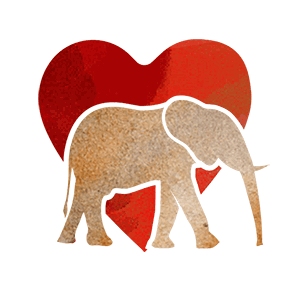
Support our Orphans’ Project
- Aerial Surveillance
- Anti-Poaching
- Community Outreach
- Saving Habitats
- Veterinary Units
- Water for Wildife

IMAGES
VIDEO
COMMENTS
Nairobi Nursery Visiting. The Sheldrick Wildlife Trust (SWT) is world-renowned for its work rescuing and rehabilitating orphaned baby elephants and rhinos. The SWT Nursery, located in Nairobi National Park, is where an orphan's journey begins — a journey that will culminate, many years down the line, in their reintegration back into the wild.
The adoption funds go to all the elephants, as some orphans attract more adopters than others. Presently there are more than 80 milk and Keeper dependent orphans being cared for between the Sheldrick Wildlife Trust's orphan units. If you are having trouble choosing an orphan to adopt, we can help here.
A popular spot for tourist on their stay or stopover in Nairobi is the Sheldrick Wildlife Trust elephant nursery. The "Nairobi Nursery" has successfully raised 282 elephant orphans to date, as well as 17 hand-raised rhinos. ... We were able to arrange a private visit at 9:00 AM. Upon arrival, we were met by a member of the SWT team who ...
3.) Private Visit The third way you can visit the elephant orphanage is by booking a private visit. Every day at 3 pm is reserved for private visitors. This can be arranged for a private group of up to 10 people and a significant donation will be required - currently, the amount is $1,000 per group of 10.
Sunday. 11:00 AM - 12:00 PM. Write a review. About. Sheldrick Wildlife Trust (SWT) is a leader in African wildlife conservation. Through its Orphans' Project, SWT has raised over 320 orphaned elephants and rhinos. When grown, each orphan is reintegrated into a protected wilderness. The SWT Nursery, located in Nairobi National Park, is the first ...
Every Orphan Trail Safari includes a Private Visit to the Sheldrick Wildlife Trust Elephant Orphanage in Nairobi, staying at their remote private Eco Camps & Lodges in Tsavo, finishing the adventure with a traditional Wildlife Safari in one of Kenya's prestigious National Parks. All accommodation fees for the SWT Eco Camps go directly to the ...
Elephant Nursery. Address. KWS Central Workshop Gate, Magadi Rd, Nairobi, Kenya. Phone +254 111 044200. Web Visit website. If you're planning a trip to Kenya, there are many reasons to extend your layover in Nairobi. At the top of the list is the David Sheldrick Wildlife Trust's Orphans' Project, which rescues, rehabilitates, and ultimately ...
Private Visit: Afternoon - 3pm-4pm Of the two opportunities to visit the elephant orphanage, this is the most exclusive and expensive. For Lance and I, it was the only option available during the time of our visit, in June 2021. At that time Sheldrick was still limiting the number of guests on-site.
The SWT 11:00-12:00 visit costs US$20 per person (age 12 and above) and US$5 per child (age 11 or under). The rates for Kenya residents and citizens are Ksh2000 and Ksh500 respectively. The session can be quite busy with other overseas visitors as well as Kenyans, including school parties. If you'd like a more private experience, you can also ...
Our Orphans' Project - Rescuing and rehabilitating orphaned infant elephants and rhinos is at the core of what we do. Find out more. Best known for our work to protect elephants, the Sheldrick Wildlife Trust (SWT) operates the most successful orphan elephant rescue and rehabilitation program in the world. But we do much more than this.
The elephant orphanage is open every day of the year, except for December 25th. You can only visit for one hour though from 11 am-12 pm. This is when the elephants come out and the staff tell you about their procedures, the elephants' stories, and the importance of conservation. Admission only costs $7 (or 500 Kenyan shillings).
Daphne David Sheldrick elephant orphanage is a world-class conservation figure and the premier authority on the successful raising of milk-dependent infant elephant and rhino orphans. Daphne Sheldrick's Animal Orphanage can only be visited for an hour every day between 11 am and noon. ... The Private visit allows you to touch and feed the baby ...
At 12pm we will transfer you back to your hotel. Visit the David Sheldrick Wildlife Trust Elephant Nursery in Nairobi during the daily timing 11am to 12pm for an entry fee of USD 15 per person. A tour here allows you to see baby elephants which the orphanage rescues from the parks and reserves in Kenya.
Nowadays, the Sheldrick Elephant Orphanage is run by the daughter of Daphne and David Sheldrick: Angela. However, the wildlife trust does not only care for elephants. It also raises endangered rhinos. Nonetheless, when you book a public visit to the wildlife trust, you will only see the elephants.
The Nairobi elephant orphanage is open to the general public from 11 to Noon daily. Elephant orphanage entrance fee: 500 Kenyan shillings per person (about $7 USD) The general public session is a great way to visit the elephants and learn about the trust. If you visit, a staff member will direct you to a roped-off area.
The David Sheldrick Wildlife Trust, known as Sheldrick Wildlife Trust, is a charity in Kenya, a registered charity in England and Wales number 1103836, and is supported by The David Sheldrick Wildlife Trust USA, Inc. a 501(c)3 in the United States (EIN 30-0224549)
Founded by Daphne Sheldrick in 1977 in honor of her late husband conservationist David Sheldrick, the Sheldrick Wildlife Trust has dedicated itself to rescuing and raising orphaned elephants for ...
Kenya Tours And Safaris: A great National Park experience - See 436 traveler reviews, 61 candid photos, and great deals for Nairobi, Kenya, at Tripadvisor.
Full-Day Lake Nakuru National Park Private Tour from Nairobi. 65. Full-day Tours. from . ... David Sheldrick Elephant Orphanage Half-Day Tour in Nairobi . 16. 4WD Tours. from . $75. per adult (price varies by group size) ... It is, however, not that easy to go visit the orphanage.
Udawalawa Elephant Orphanage: Cute baby elephants!!! - See 290 traveler reviews, 383 candid photos, and great deals for Udawalawa, Sri Lanka, at Tripadvisor.
Orphans' Project. Rescuing orphan elephants, rhinos, and other species, raising them with specialist care, and reintegrating them into a protected wilderness. At the heart of the Sheldrick Wildlife Trust's conservation activities is the Orphans' Project, which has achieved world-wide acclaim through its hugely successful elephant and rhino ...